Hier revient et je l’entends Katia Kameli
19 janvier — 16 avril 2023
Artiste, réalisatrice et productrice, Katia Kameli mène un travail dense et protéiforme depuis le début des années 2000. Forte d’une double culture française et algérienne, elle se fait passeuse entre différents territoires et questionne les points aveugles de l’Histoire. Suivant ses propres cheminements, elle relie des faits éloignés, renoue des liens distendus, donne à entendre des paroles silenciées pour écrire des contre-récits. Ses recherches se mêlent, s’enchâssent et tissent entre elles une multiplicité de perspectives. À l’intersection d’un langage poétique, d’études visuelles et de techniques artisanales, la pratique artistique de Katia Kameli est le fruit d’une grande fabrique de relations par affinités, proximités, et amitiés. Sa première exposition personnelle dans deux institutions parisiennes réunit un ensemble d’œuvres existantes et de nouvelles productions.
À l’ICI, l’exposition met un coup de projecteur sur vingt ans de créations. Elle souligne la cohérence d’une démarche où les récits circulent, se transforment, se transposent et se superposent, à travers le monde et les époques. L’artiste y embrasse le rôle de traductrice : ses photographies, vidéos, dessins et installations mettent en jeu un vocabulaire formel et conceptuel qui se conjugue au sein d’un espace intermédiaire entre les langues, les sons, les esthétiques et les cultures. Le projet Le Cantique des oiseaux, co-produit avec La Criée, centre d’art contemporain à Rennes, inclut une vidéo réalisée à la Goutte d’Or en partenariat avec le Conservatoire du 18ᵉ Gustave Charpentier. L’œuvre Stream of Stories, sur les métamorphoses des fables de Kalîla wa Dimna qui ont inspiré Jean de La Fontaine, est augmentée d’une extension en tuft conçue en collaboration avec l’artiste-textile, Manon Daviet.
L’exposition à Bétonsalon s’organise autour du Roman algérien ; elle présente les trois vidéos qui le composent, réalisées entre 2016 et 2019 et déploie une recherche en acte pour un quatrième chapitre qui prend pour point de départ le film La Nouba des femmes du mont Chenoua réalisé par l’écrivaine et cinéaste algérienne Assia Djebar en 1977. En prenant appui sur ce premier film algérien réalisé par une femme, qui circule aujourd’hui d’une copie à une autre, Katia Kameli semble prolonger le geste de celle qui revient sur les traces de femmes résistantes pendant la guerre de l’indépendance dans la ville et les montagnes de Cherchell. Par le recueil de paroles de femmes de différentes générations, elle compose un récit polyphonique vivant où les histoires intimes et collectives se donnent à entendre par-dessus les complexités du passé colonial.
Le titre de l’exposition, « Hier revient et je l’entends », est issu de Femmes d’Alger dans leur appartement, roman d’Assia Djebar de 1980.
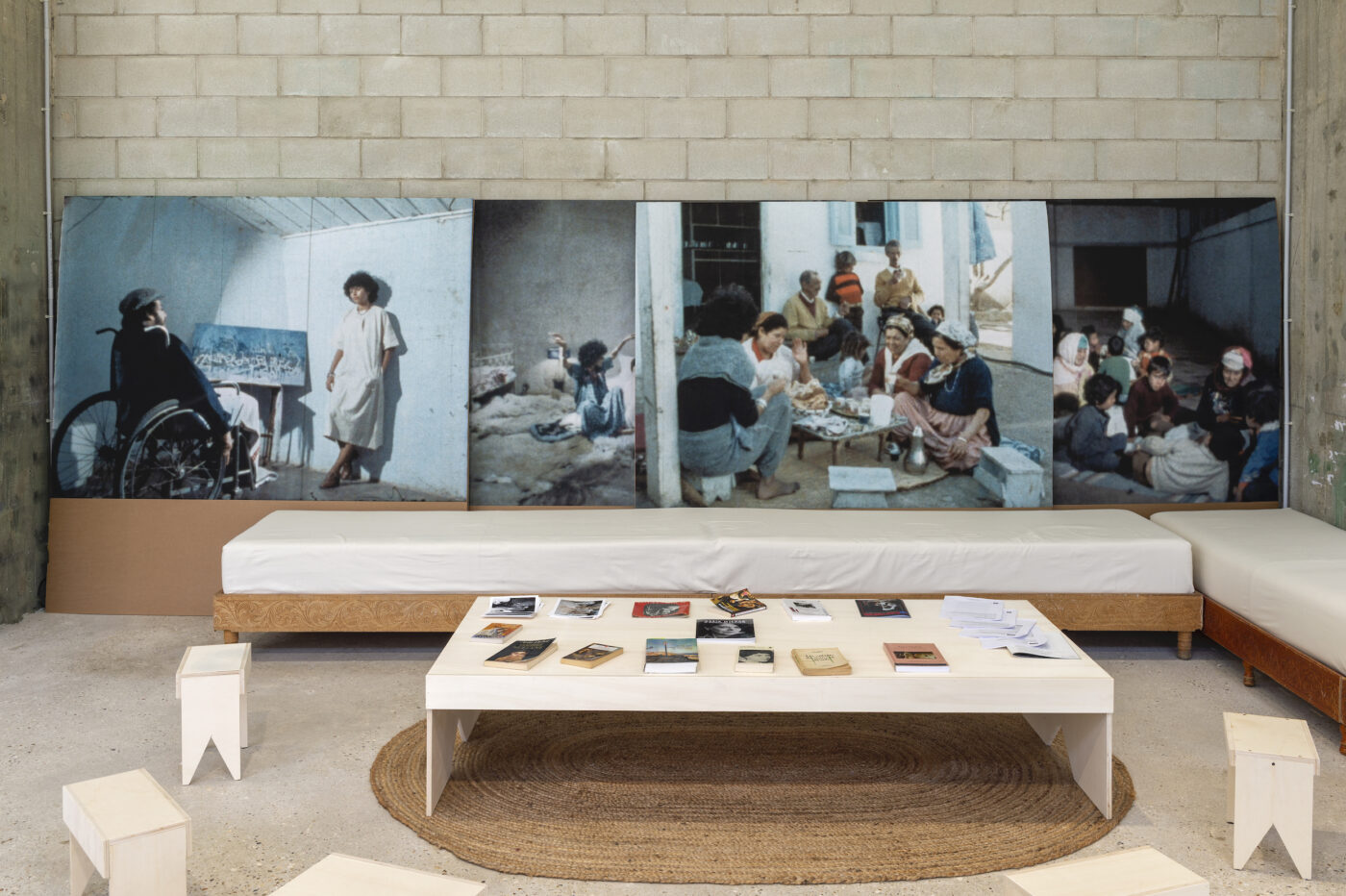
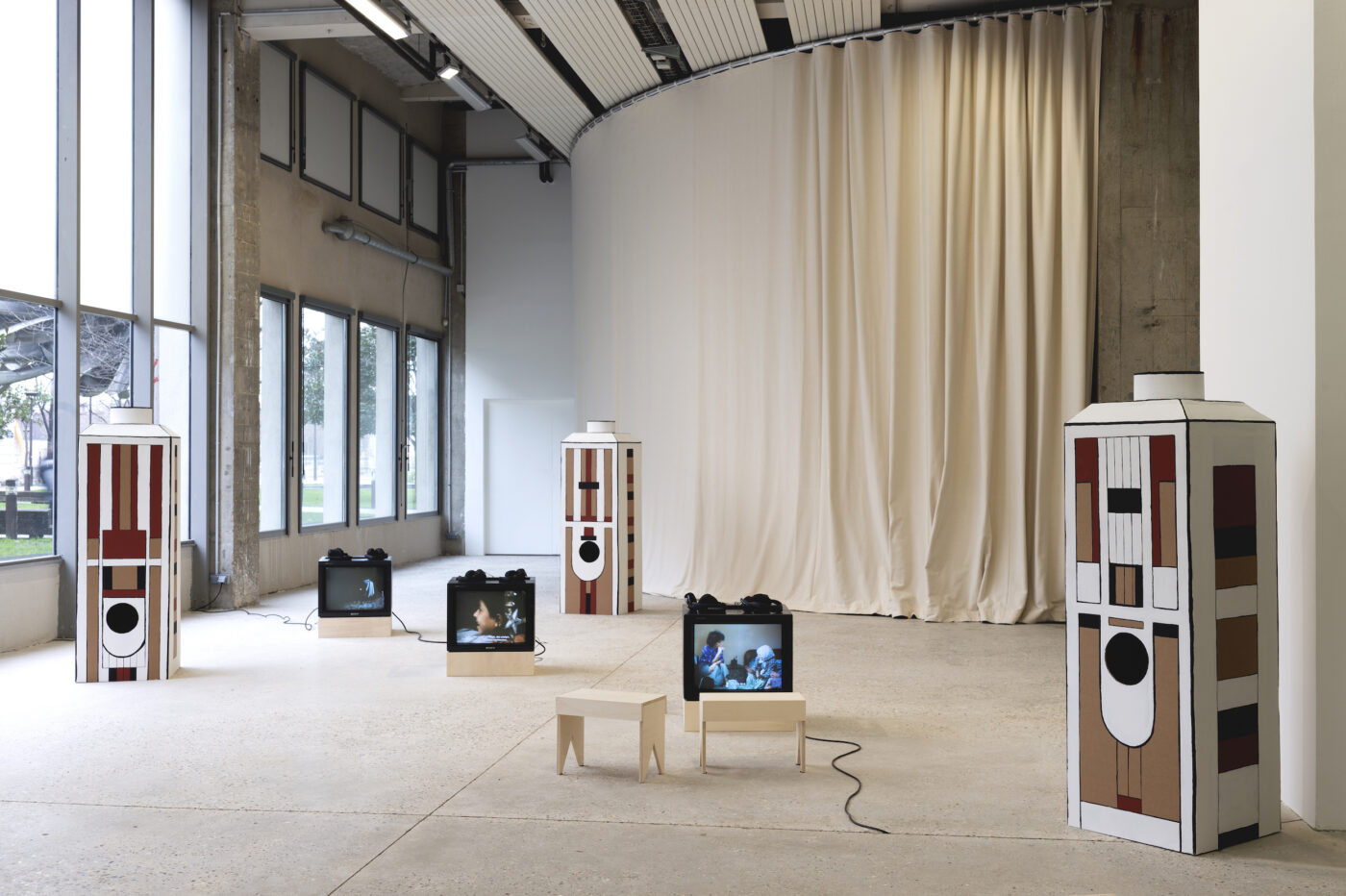
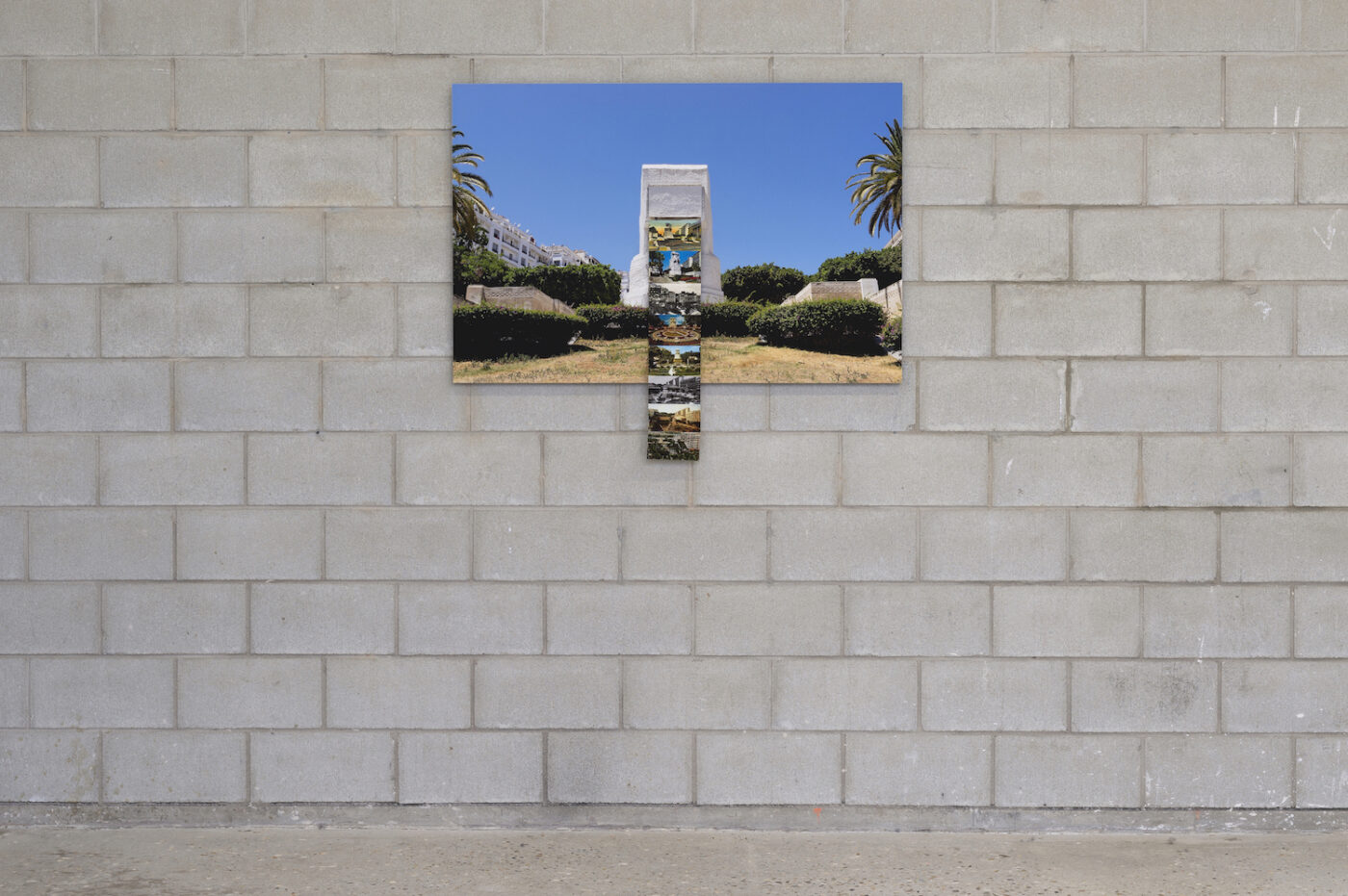
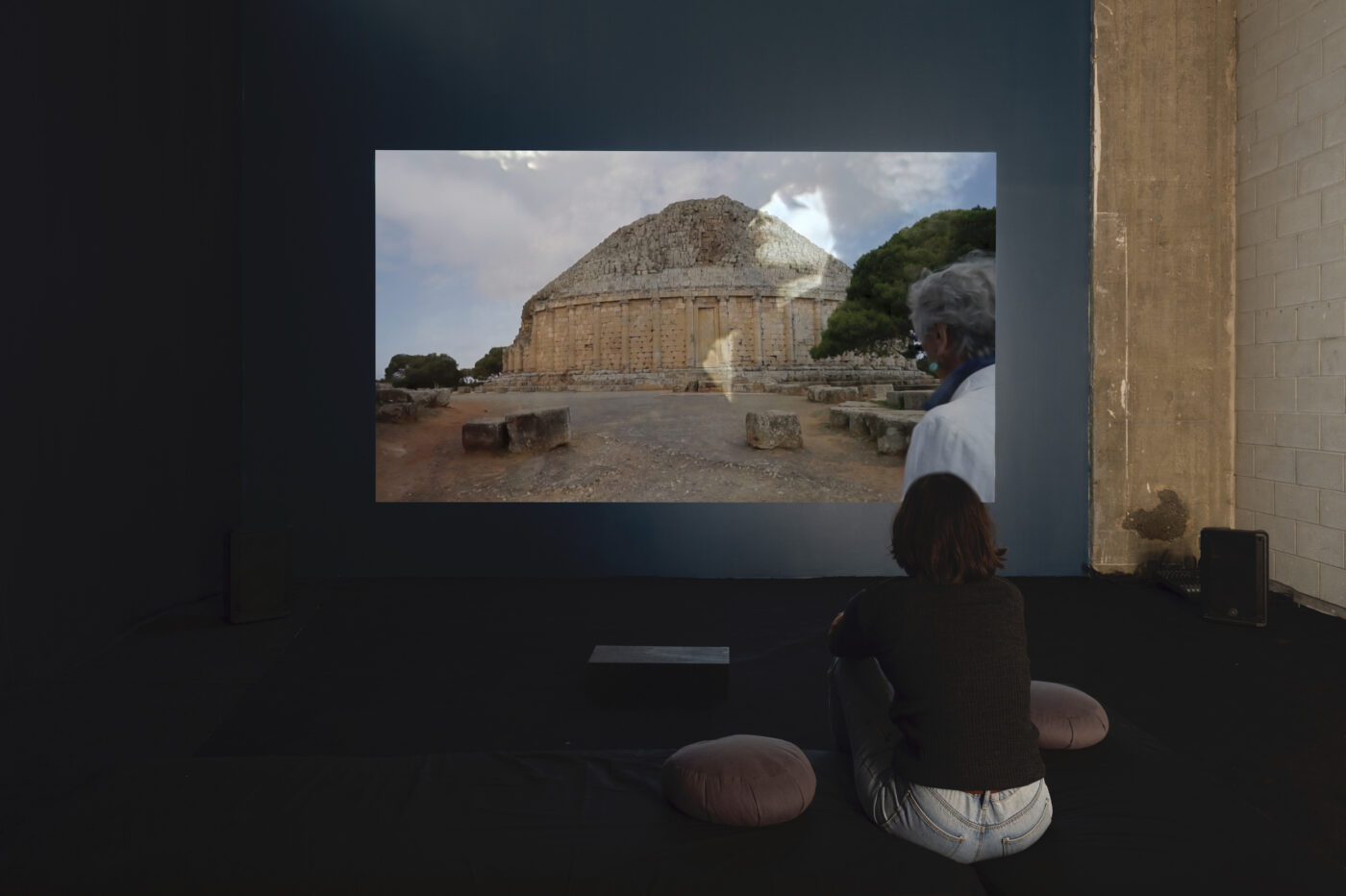
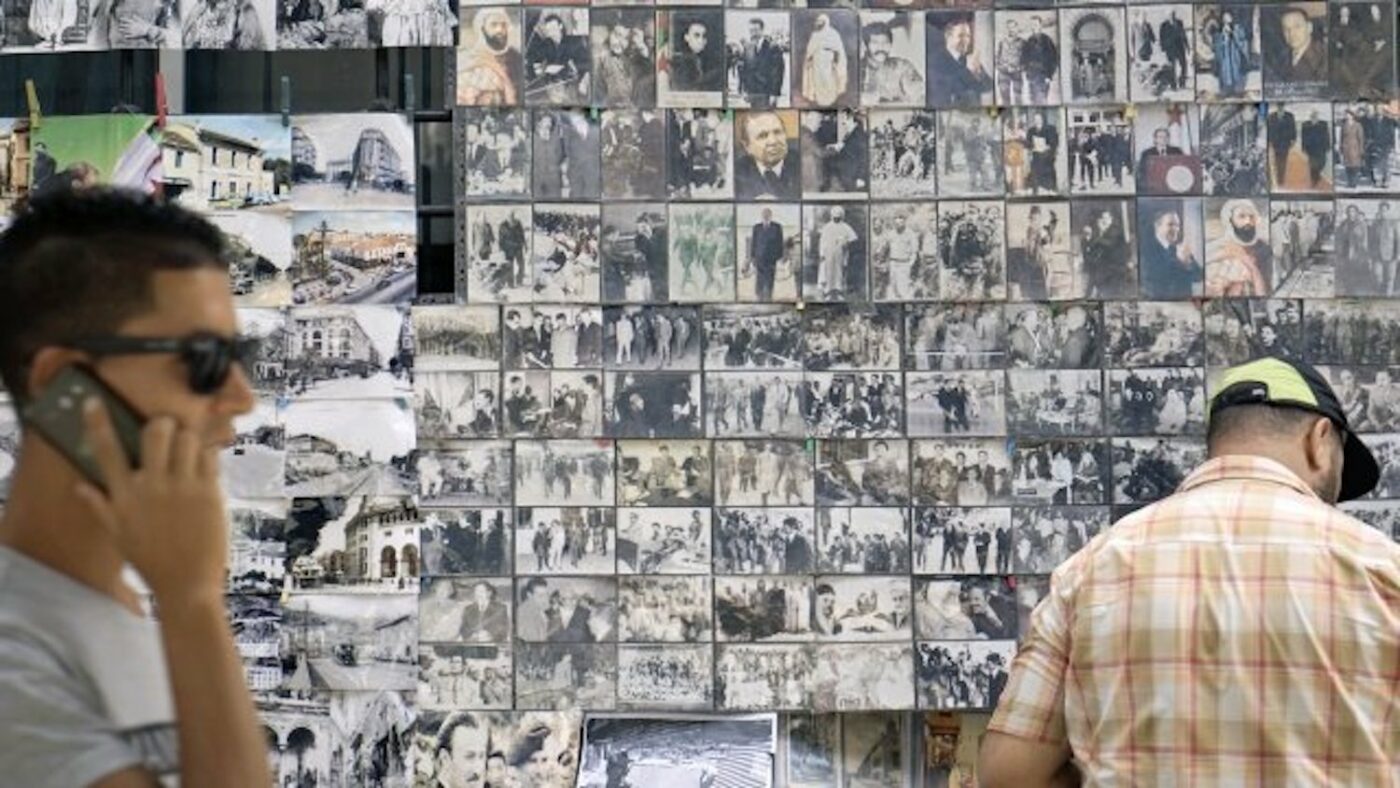
Trab’ssahl Abdessamad El Montassir
11 mai — 13 juillet 2023
Lauréat Bourse de recherche et de production ADAGP / Bétonsalon 2022
Trab’ssahl signifie en hassanya, la « terre de l’ouest » et désigne une large part du territoire sahraoui. C’est là, sur cette terre, dans cette langue, dans l’histoire largement ignorée d’un conflit ininterrompu depuis près de 50 ans, entre souveraineté et autonomie, que s’ancre le travail d’Abdessamad El Montassir. « Tout ce que nous avons vécu, nous ne pouvons le dire. Interroge les ruines, interroge le désert et ses plantes épineuses. Ils ont tout vu et tout vécu, ils sont restés sur les lieux. Nous, nous n’avons plus les mots. » Ces paroles sont celles de Khadija qui a quitté sa vie nomade pour la ville en 1975. Puissantes bien que désœuvrées, elles énoncent pour Abdessamad El Montassir un programme qu’il mène depuis 2015 : comment montrer ce qui ne peut se voir, comment écouter ce qui ne peut se dire ? Qu’advient-il des mémoires empêchées, confisquées ? Quelle forme donner à l’oubli ? En réponse à l’amnésie collective qui hante le Sahara au sud du Maroc, Abdessamad El Montassir propose d’écouter les paroles silenciées, la poésie résistante, les vents et le sable, la toponymie, d’observer les plantes résilientes et partout d’y déceler les indices d’une mémoire traumatique. Qu’il s’agisse de voix humaines ou non-humaines, elles se font les témoins même partiels auprès de celles et ceux qui sauront les entendre.
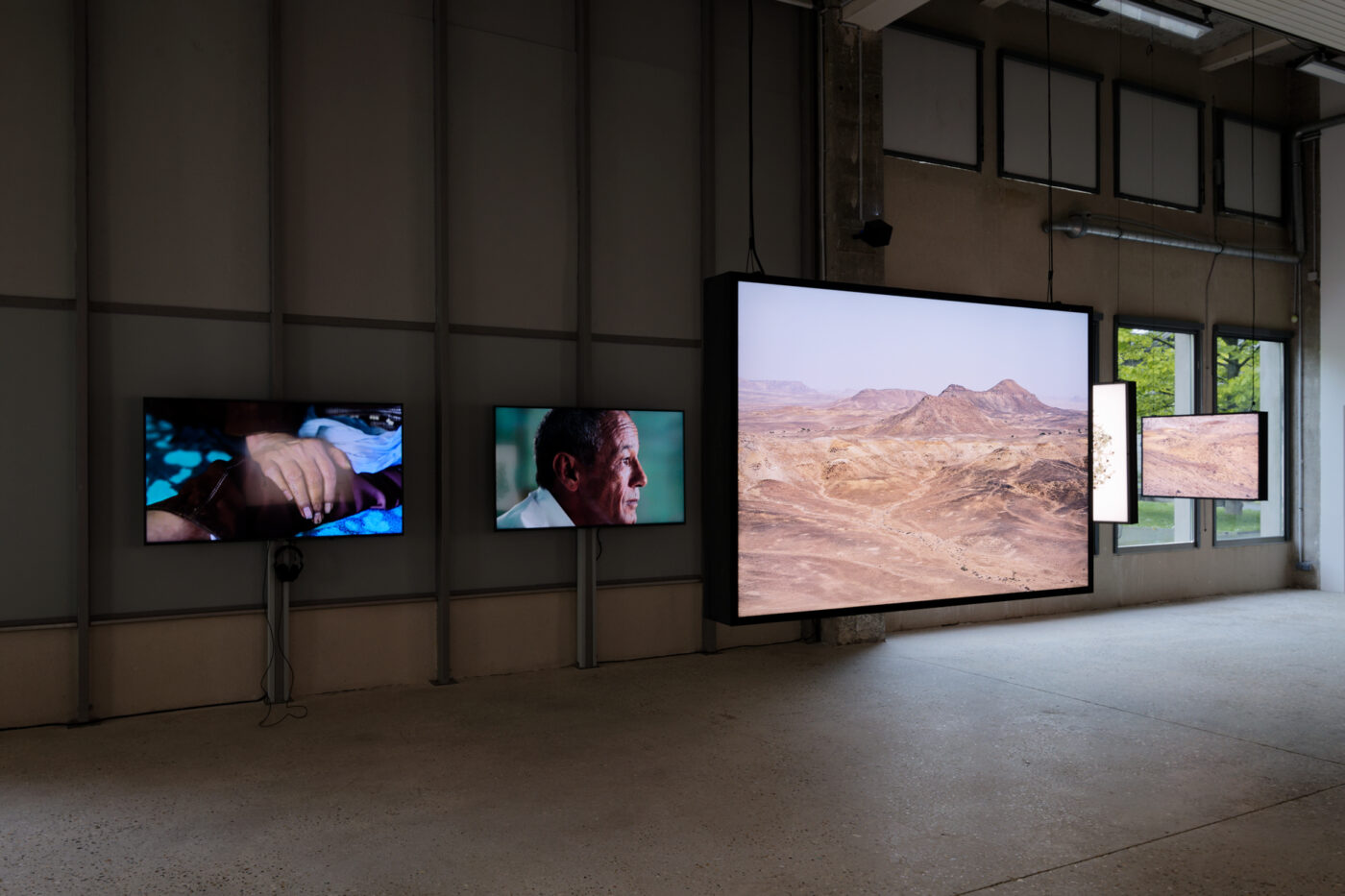
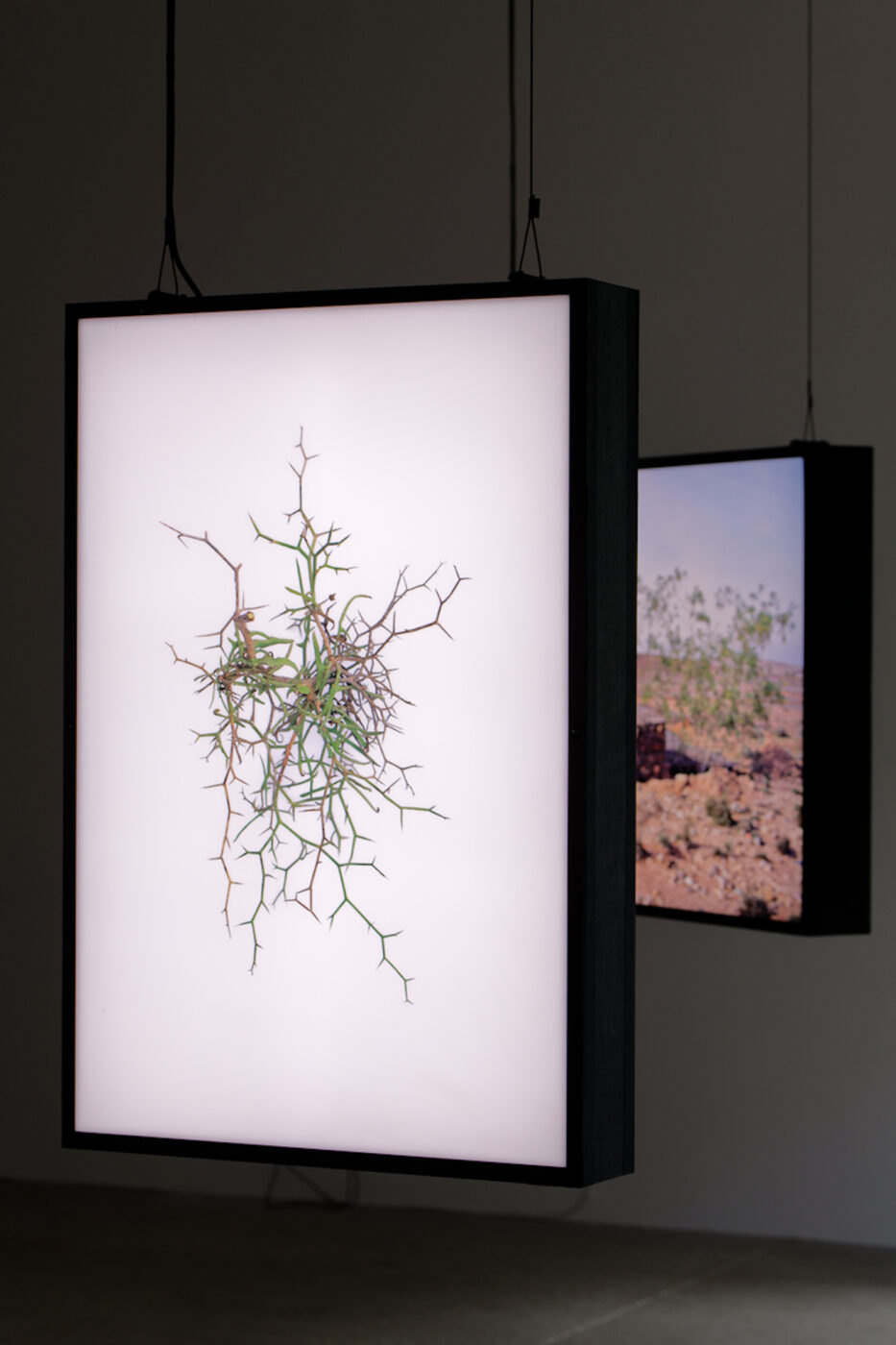
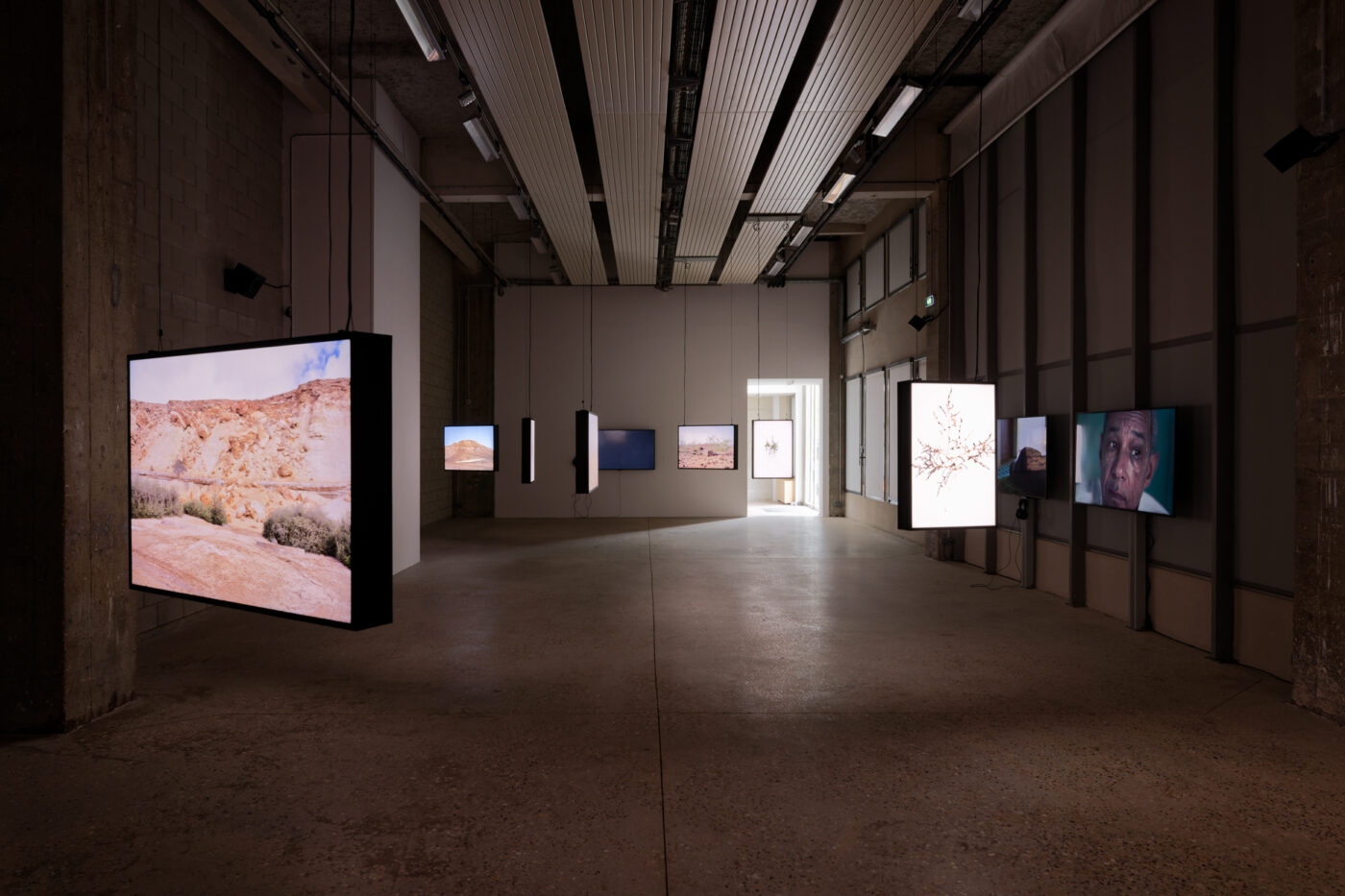
Semblable à un petit os de seiche Avec Juliette Ayrault, Nina Azoulay, Marine Ducroux-Gazio, Michelle Feeley, Anna Giner, Claire Gitton, Victor Andrea González, Hélène Janicot, Nicole et Audrey Prédhumeau
22 — 30 juillet 2023
La collective soap a souhaité, pour sa première exposition, inviter dix jeunes artistes diplômé·es ou en quatrième année de l’atelier de Dominique Figarella à l’École nationale supérieure des Beaux Arts de Paris (ENSBA) et de la section Art-Espace, encadrée par Sarah Tritz et Kristina Solomoukha, à l’École nationale supérieure des Arts Décoratifs (EnsAD).
Ces dix artistes partagent une attention singulière à leur quotidien et en récoltent les images, gestes et objets qui deviennent autant de matières à penser (narratives et plastiques) propices à l’émergence d’une œuvre. Cette exposition cherche à rendre compte de cette démarche d’écoute et de vigilance aux signes de notre environnement afin de rendre plus grande, voire immense, cette banalité à priori insignifiante.
« Quand je mange une biscotte bien croustillante, j’entends moins bien la radio ». Nathalie Quintane, Remarques.
Les artistes que nous avons invité·es partagent cette même attention, pourrait-on dire cette même acuité sensible et perceptive au réel, dans l’enregistrement de sa banalité la plus quotidienne. Aussi, leurs gestes souvent ténus et économes tiennent plus du déplacement ou du re-positionnement d’objets manufacturés préfabriqués que du surgissement abstrait d’une forme imaginaire inédite. Comme s’ils cherchaient par leurs gestes à souligner et faire signifier l’existant, le réel latent bien présent mais trop souvent invisible. L’œuvre, dès lors, se propose d’accompagner le regard. Elle oriente, pointe et dé-montre pour « porter » à la vue. Cette action de monstration place ces objets du côté du mini-monument ou de la structure porteuse qui précisément, du fait de sa position, tient, enlace – dans le sens d’accueil et de soutien – et ainsi rehausse l’objet abrité.
Ces objets collectés, souvent boîtes, emballages, cagettes, tissus ou ossatures de plastique, posent la question du rapport pelliculaire de la peau à son enveloppe charnelle. Ce qui s’imprime, fait moule, délimite la matrice et qui, par la suite, s’en détache et s’en absente par un concours de circonstance. Ces objets réceptacles laissés vierges de leur contenant sont donc aussi des témoins, sortes de restes et marques fossilisées de la traversée d’un vivant. D’autres à l’inverse, plus habités, enregistrent les fluides de cet organisme en action et en cristallisent la substance.
Cette mise en évidence du corps ayant quitté son vêtement ou de l’objet extirpé de sa boîte place ces pratiques dans une tension permanente des temporalités, entre absence et présence. C’est peut-être le recours à la narration qui nous permet ici de dépasser ces antagonismes et de fictionnaliser le réel. Plutôt que d’enfermer ces objets dans un rapport exclusivement temporel lié à nos souvenirs intimes enfouis ou partagés – et à ce qu’ils réactivent de mémoire –, il serait peut-être plus judicieux de les penser sur le mode du conte, cet espace narratif autonome et achronique. Aussi, avons-nous déjà pris pour protagonistes l’emballage du paquet de biscuits, la cuillère à café ou la constellation de miettes qui parsèment la nappe du petit-déjeuner ? Les différentes pratiques que nous avons rassemblées nous permettent ainsi de voir comment le réel, si on lui accorde de l’attention, peut devenir matière à fiction.
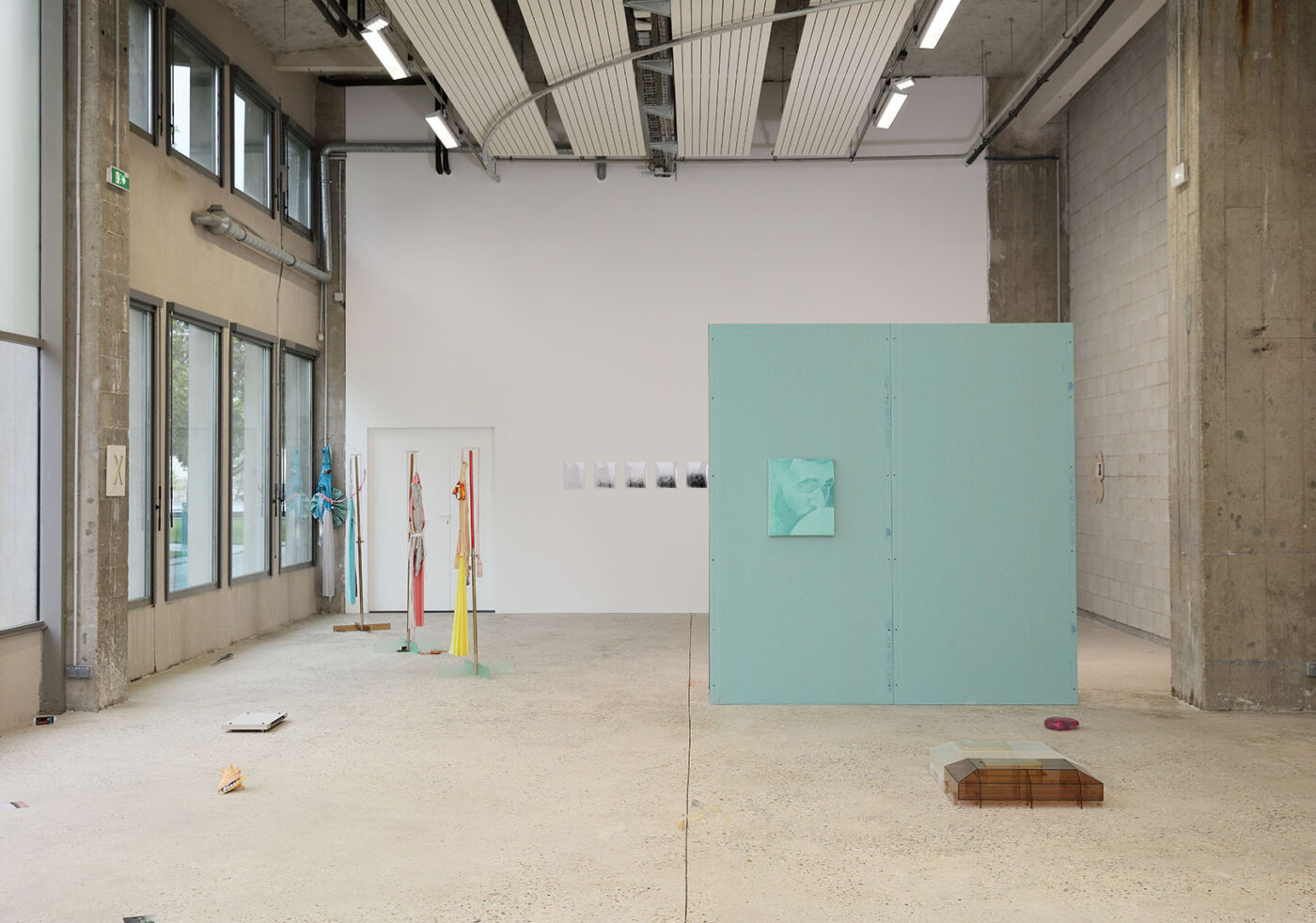
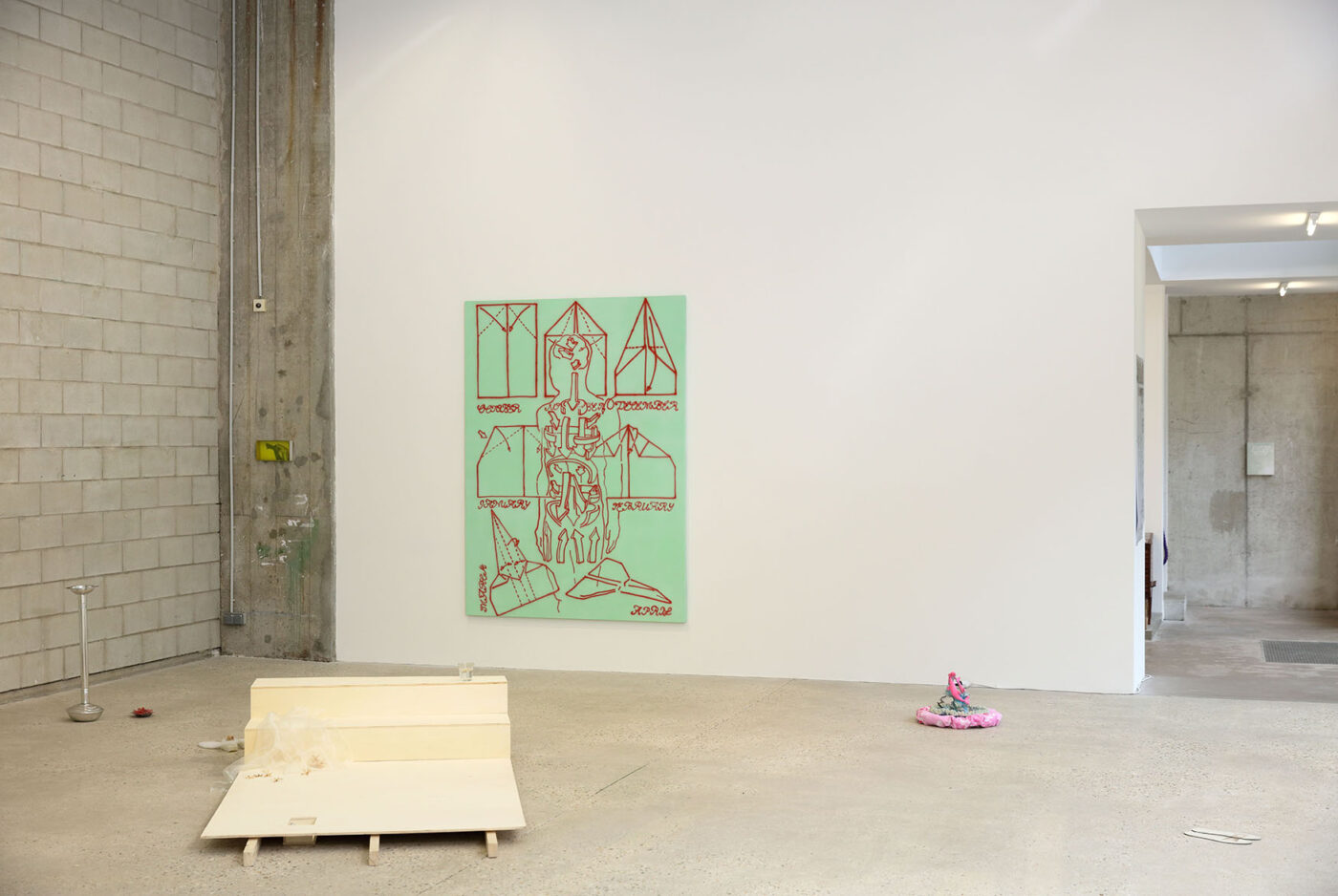
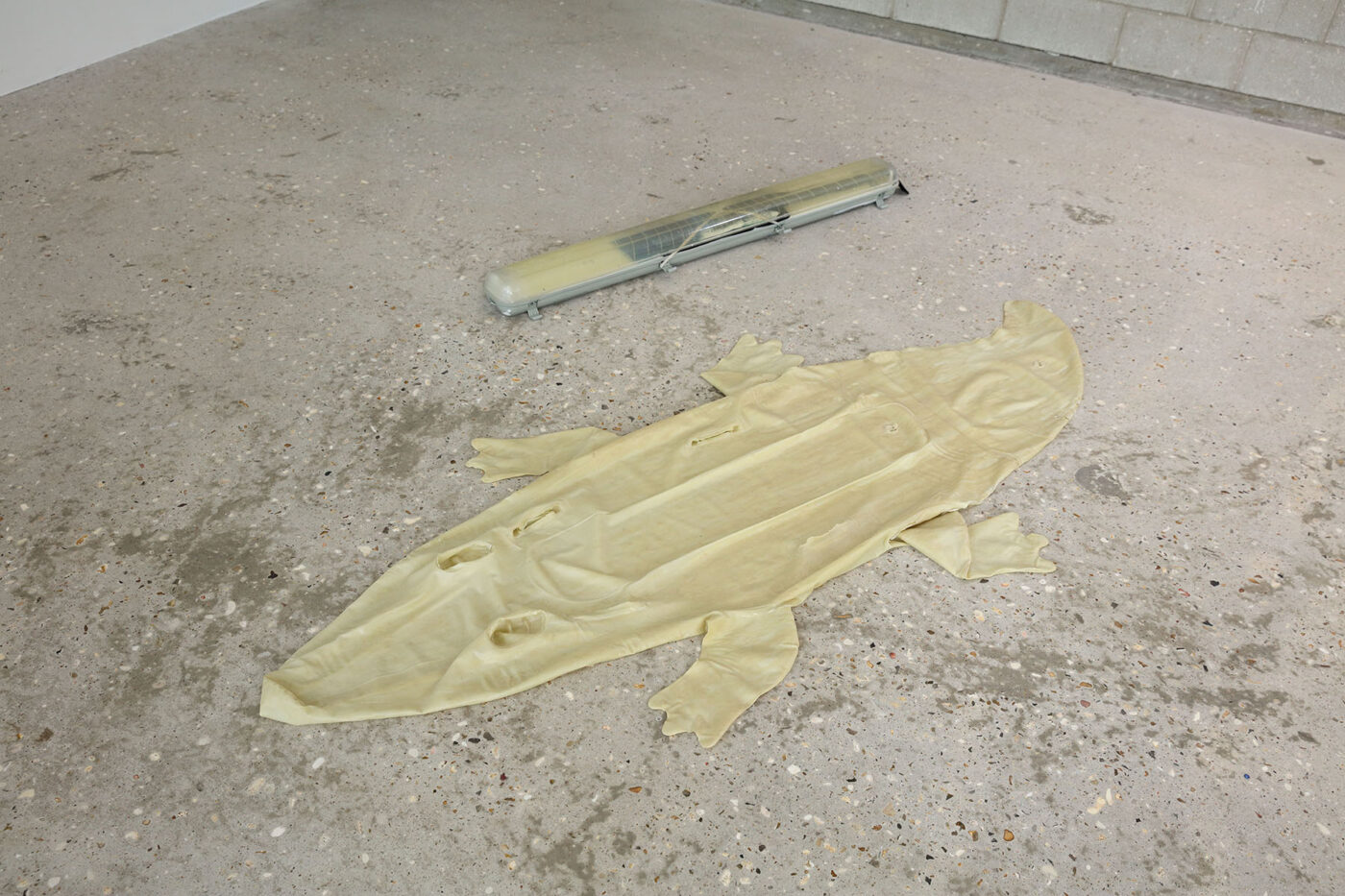
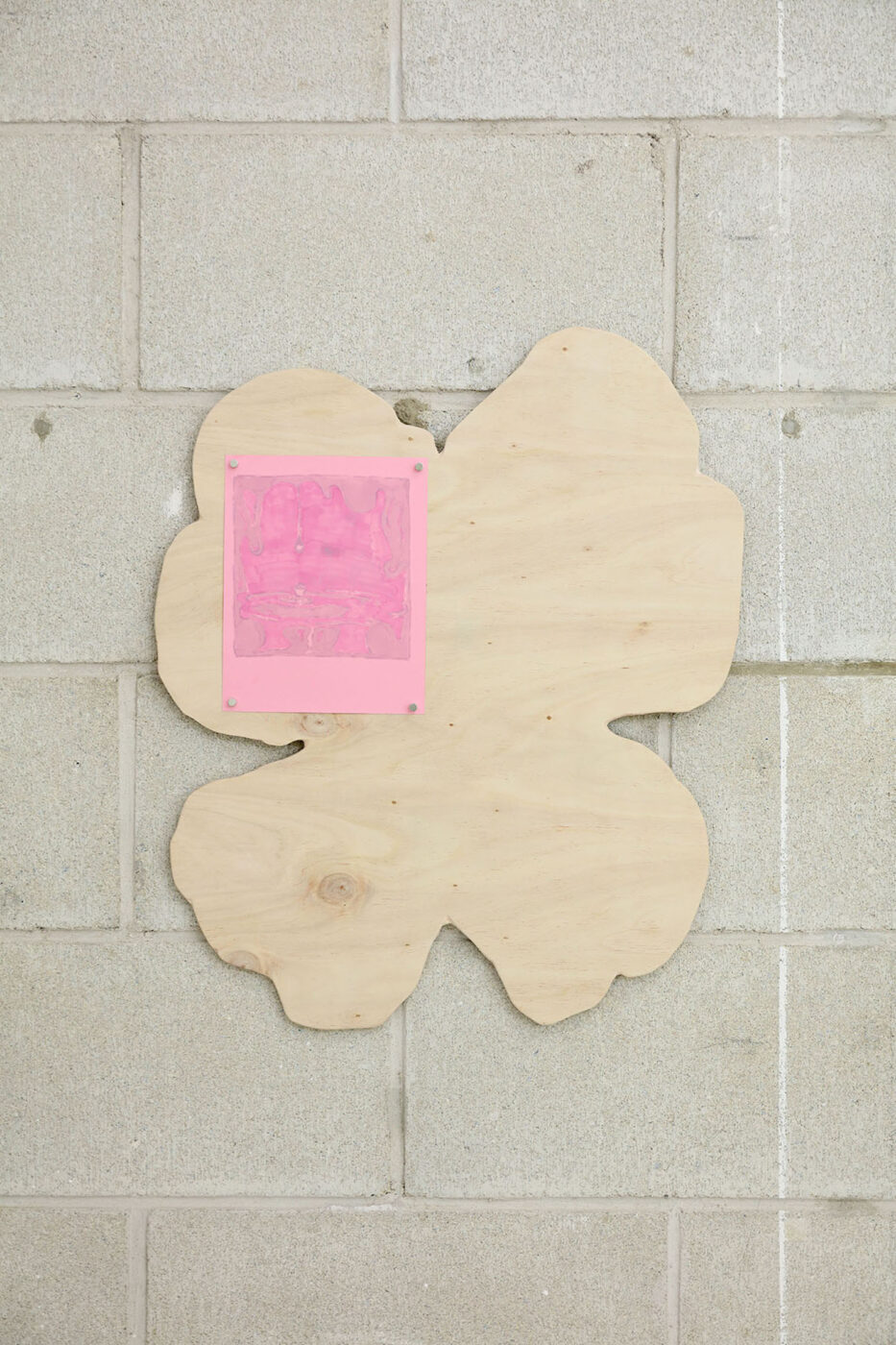
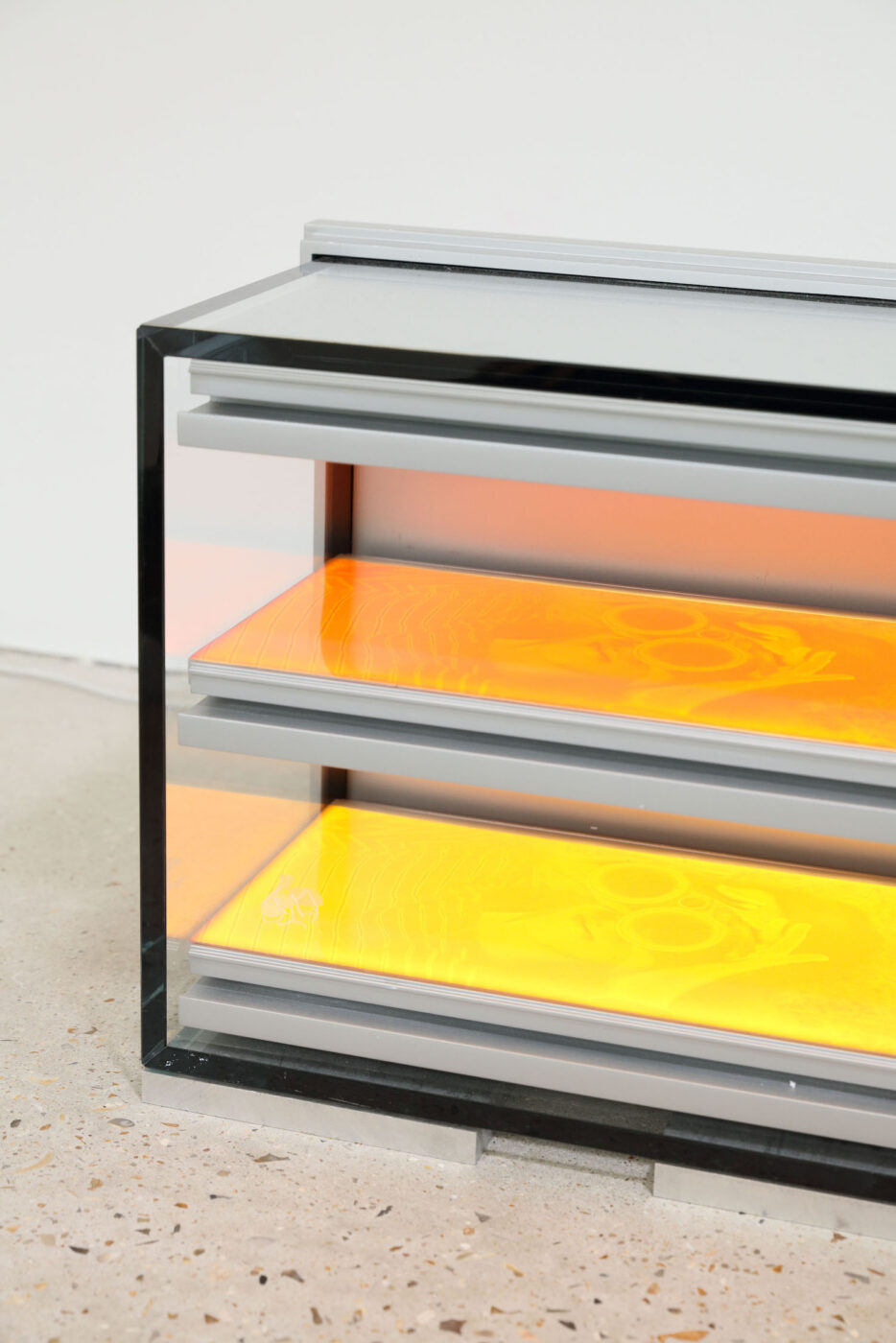
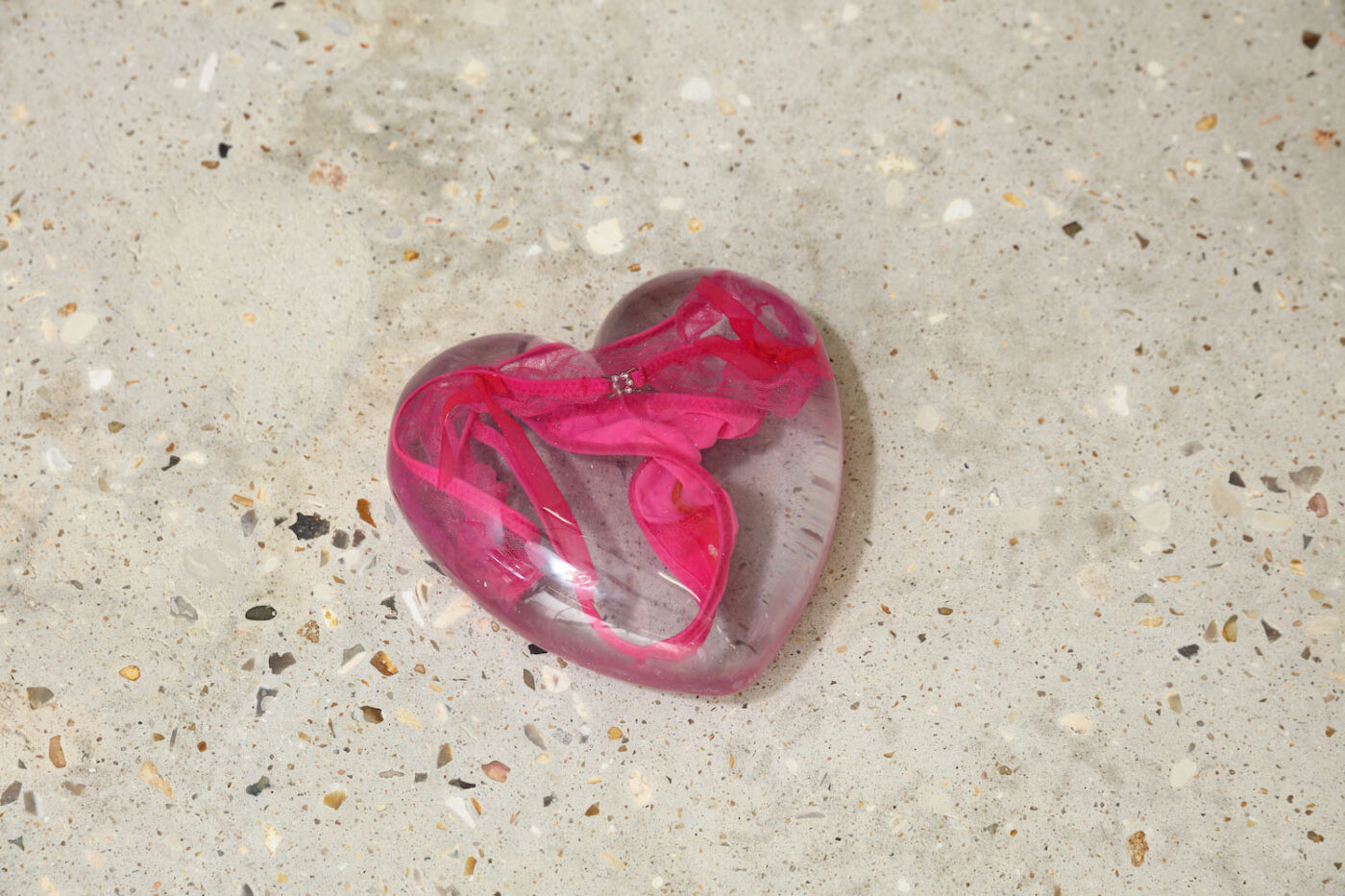
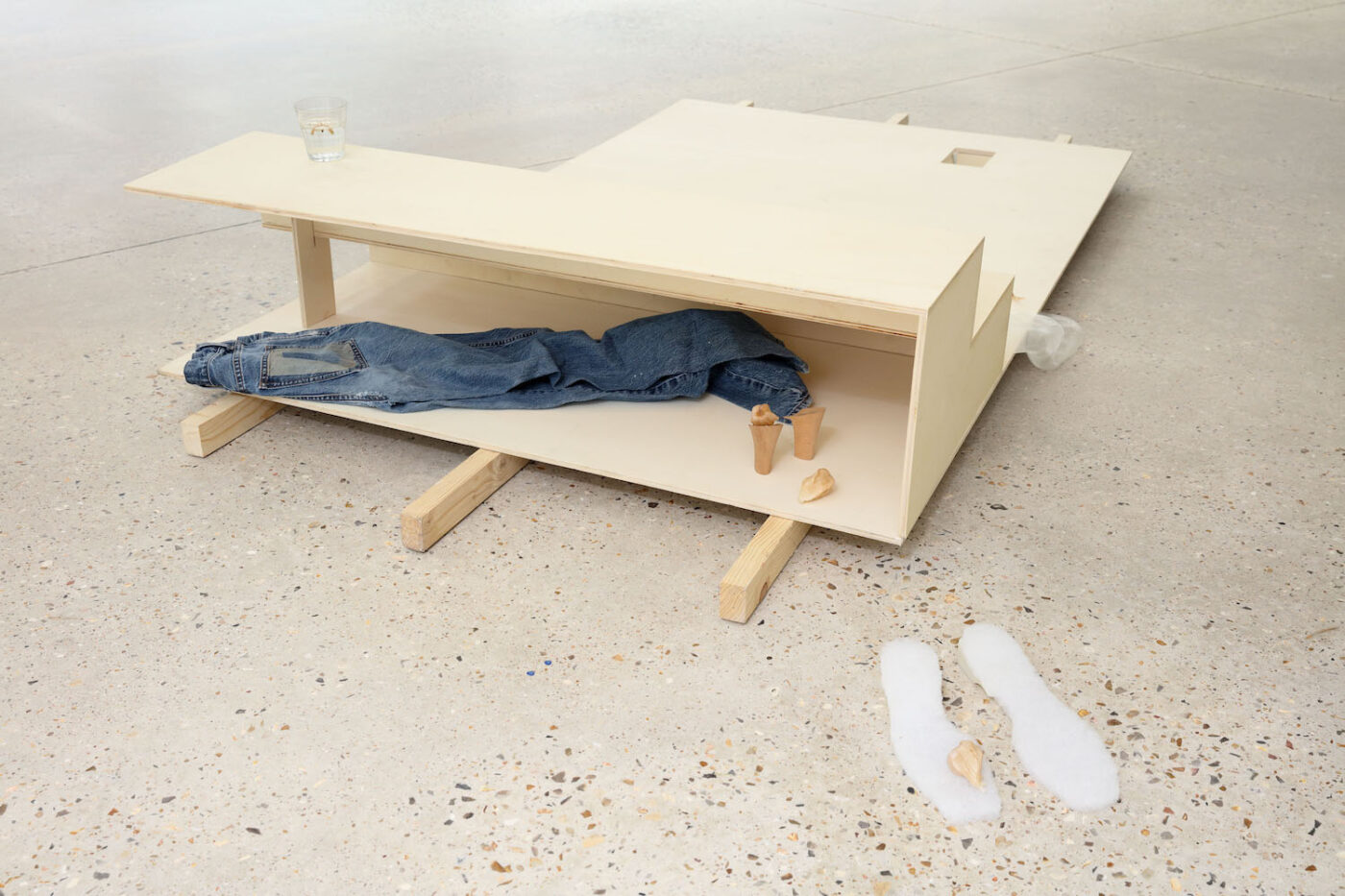
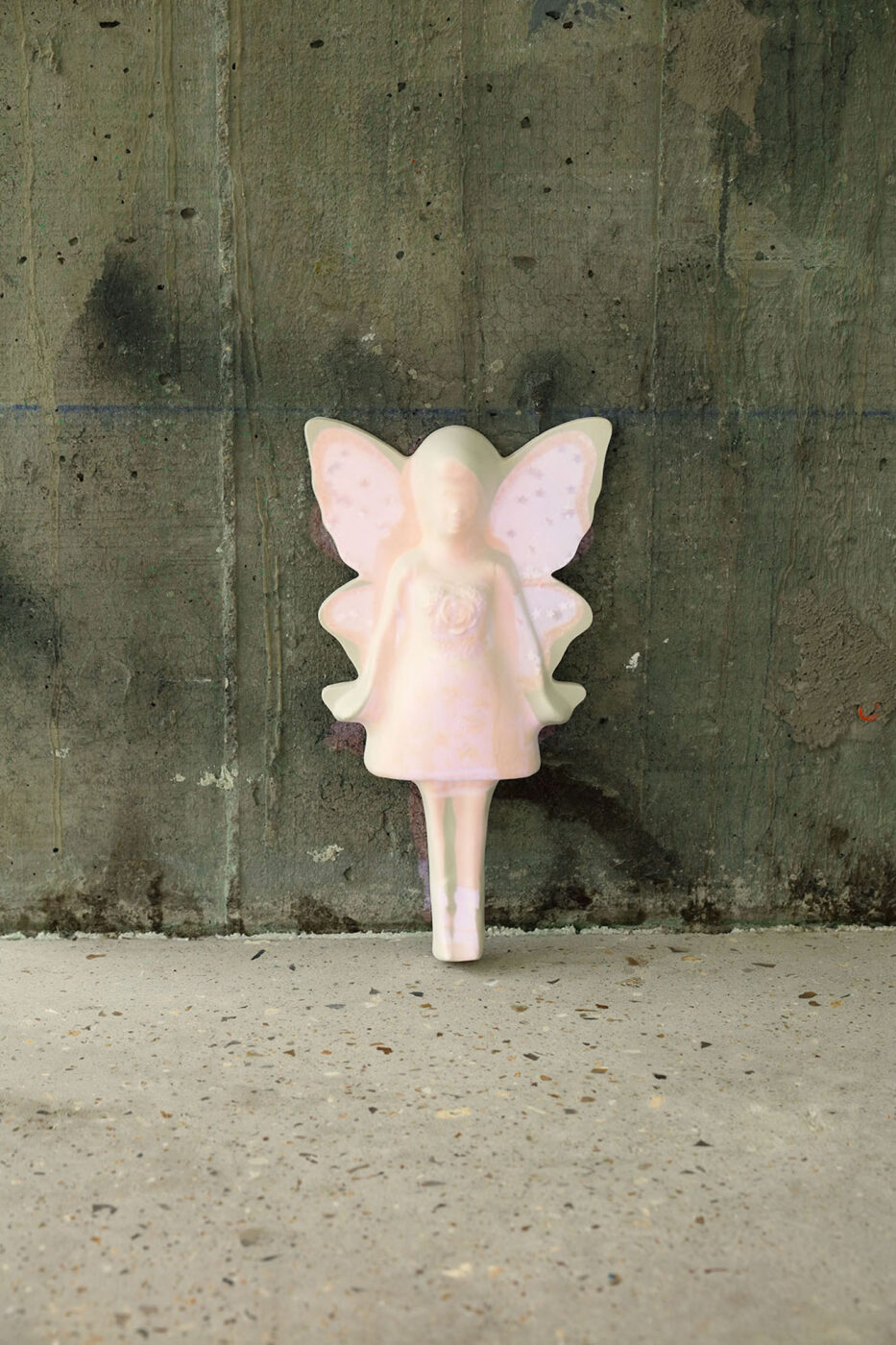
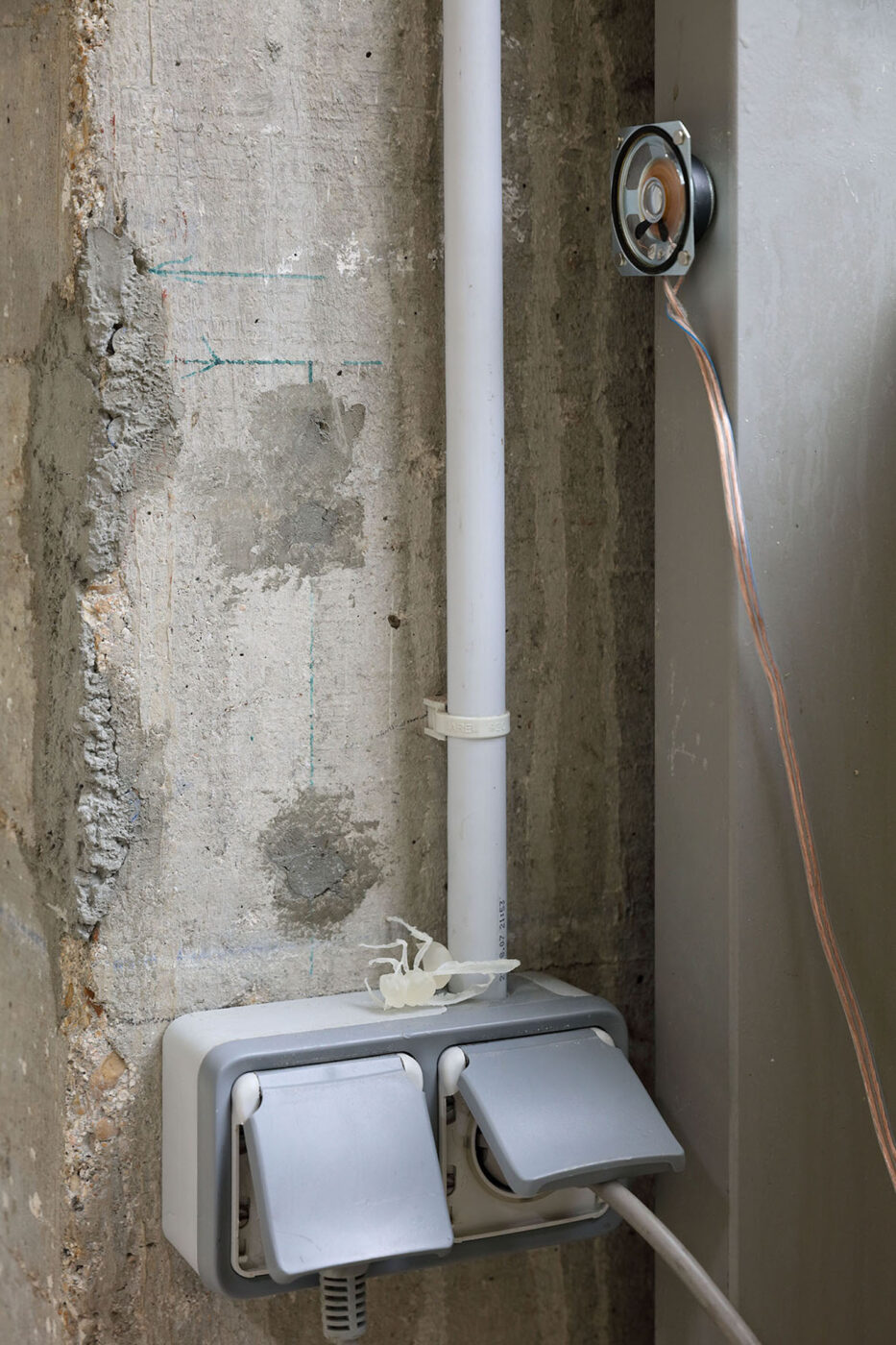
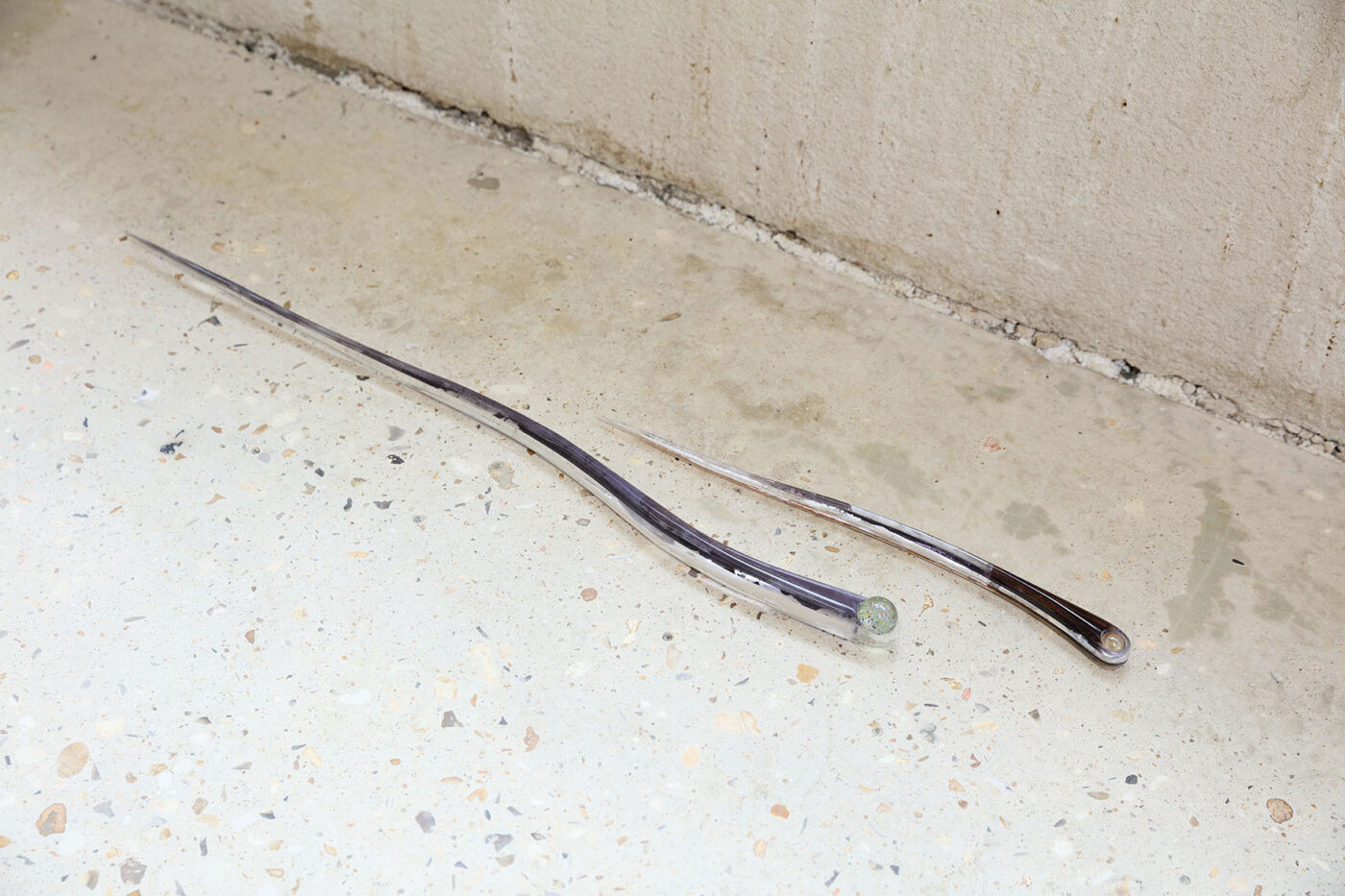
Un·Tuning Together. Pratiquer l’écoute avec Pauline Oliveros Avec No Anger, Julia E Dyck, Célin Jiang, Konstantinos Kyriakopoulos, Anna Holveck, Violaine Lochu, Emily Mast, Lauren Tortil, Christopher Willes avec Ellen Furey et Brendan Jensen, avec des œuvres de Pauline Oliveros et les participations de IONE et des Deep Listeners Ximena Alarcón, Sylvie Decaux, Lisa Barnard Kelley
20 septembre — 2 décembre 2023
Cette exposition s’inspire d’une conception singulière de l’écoute que la compositrice expérimentale états-unienne Pauline Oliveros (1932-2016) désigne par le terme de Deep Listening ; une « écoute profonde » qui, selon elle, « suppose d’aller sous la surface de ce qui est entendu. » Au cœur de cette pratique, il y a une conscience aiguë du fait qu’il y a toujours plus à entendre dans les replis de l’environnement acoustique. L’expérience du Deep Listening ouvre à de nouvelles formes de sensorialités et représente un engagement à ne jamais cesser de développer ses capacités d’écoute à travers des partitions qui, plutôt que de guider l’interprétation de la musique, proposent des stratégies attentionnelles, des manières d’écouter soi-même, les autres et l’environnement. Dans l’œuvre d’Oliveros, la pratique de l’attention s’exerce le plus souvent au sein d’un groupe. Dans la plupart de ses compositions, elle offre des indications ouvertes qui doivent être négociées collectivement par les performeur·ses, ce qui implique une grande attention et réceptivité aux autres et à ce qui arrive.
L’exposition « Un·Tuning Together » met en dialogue la pratique de Pauline Oliveros avec celles d’artistes dont les recherches font écho et prolongent ses propositions. Chaque artiste est invité·e à habiter l’ensemble du lieu et à partager avec des publics participants des pratiques mettant en jeu des principes d’improvisation et d’écoute mutuelle au sein d’un groupe. Leurs propositions se succèdent en un programme alternant entre des temps de travail collectif et des temps d’ouverture publique. L’œuvre d’Oliveros sera également pratiquée à travers des séances régulières dédiées à l’expérience des Méditations Sonores. Son travail devient une sorte de catalyseur pour penser collectivement, – avec les artistes, chercheur·euses, publics participants et l’équipe de Bétonsalon –, la manière dont des corps engagés dans ces pratiques de l’écoute peuvent produire des transformations sur les plans à la fois intime et social.
Cette exposition est le second volet de l’exposition « Retirez vos bouchons d’oreilles », curatée par Maud Jacquin avec Anne-Marie St-Jean Aubre, au Musée d’art de Joliette, Québec, du 11 juin au 4 septembre 2023.
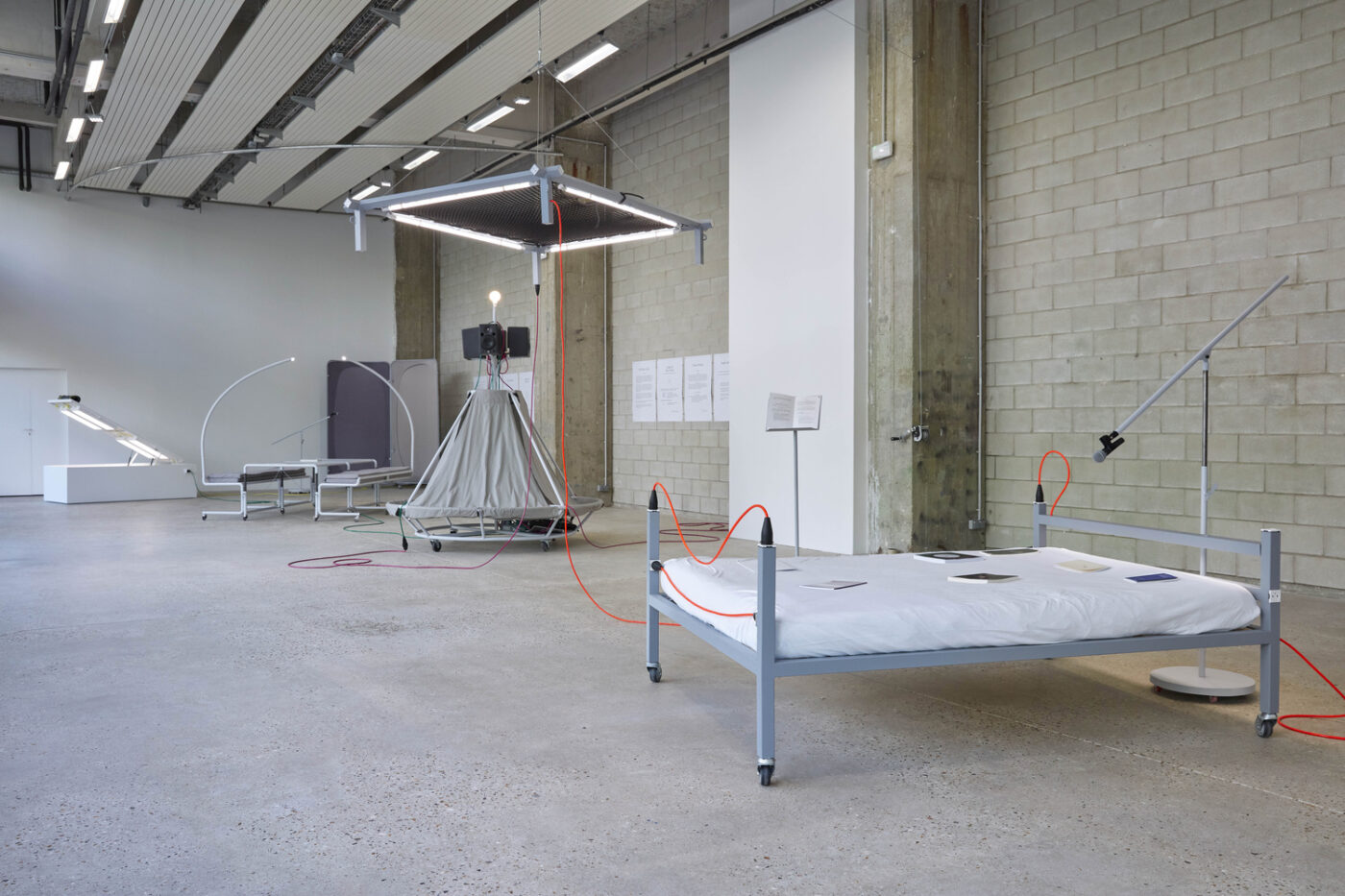
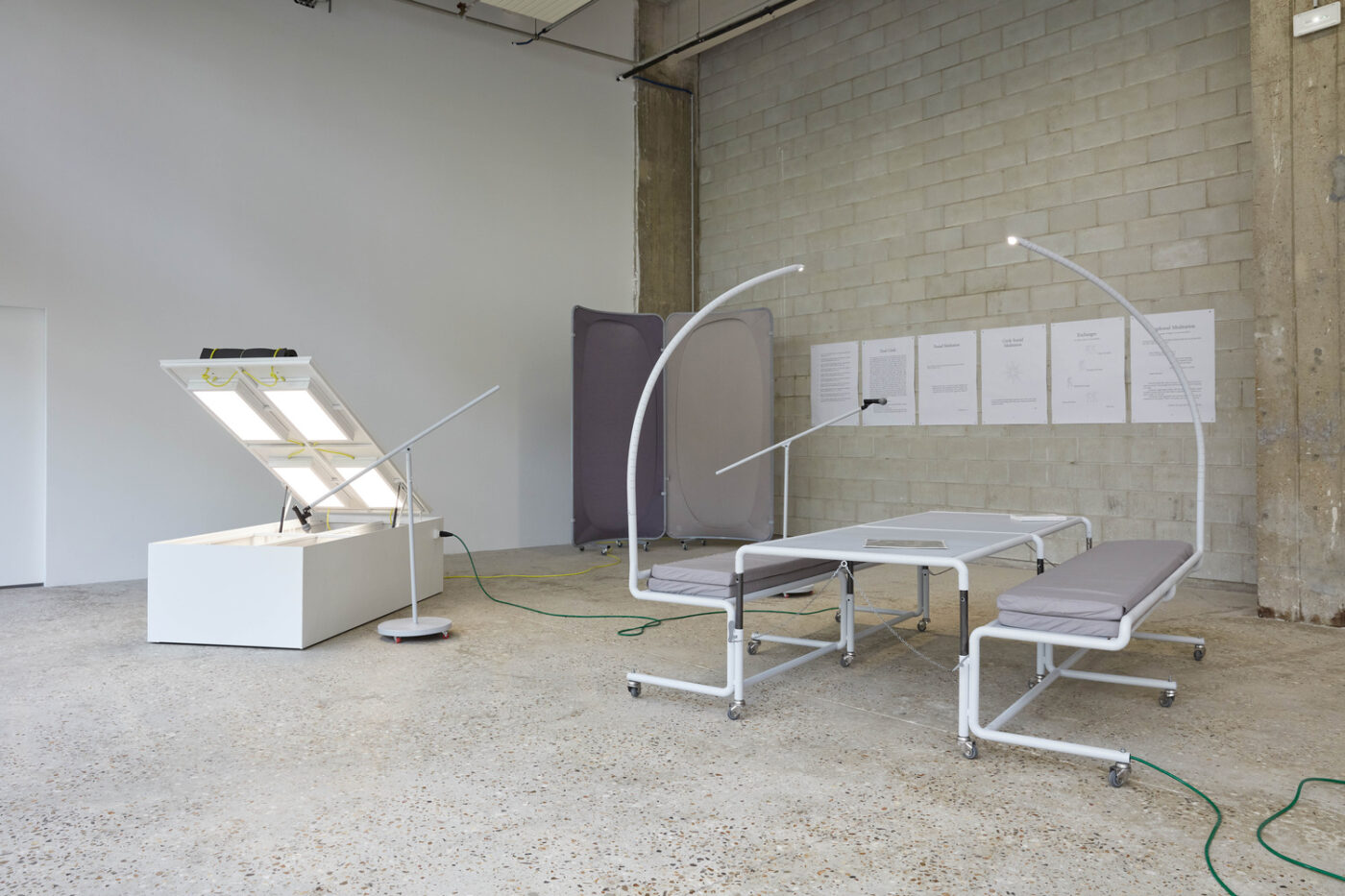
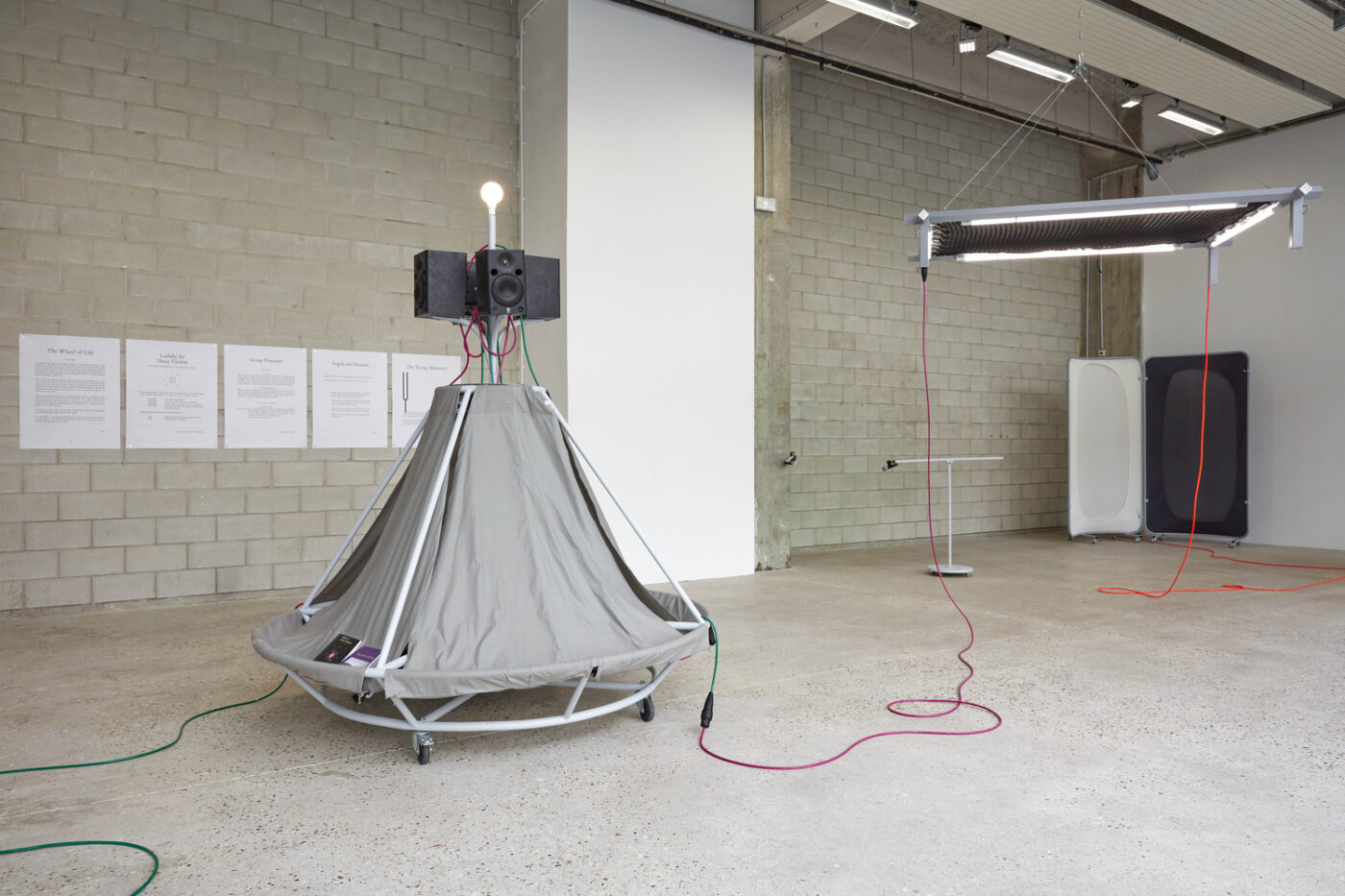
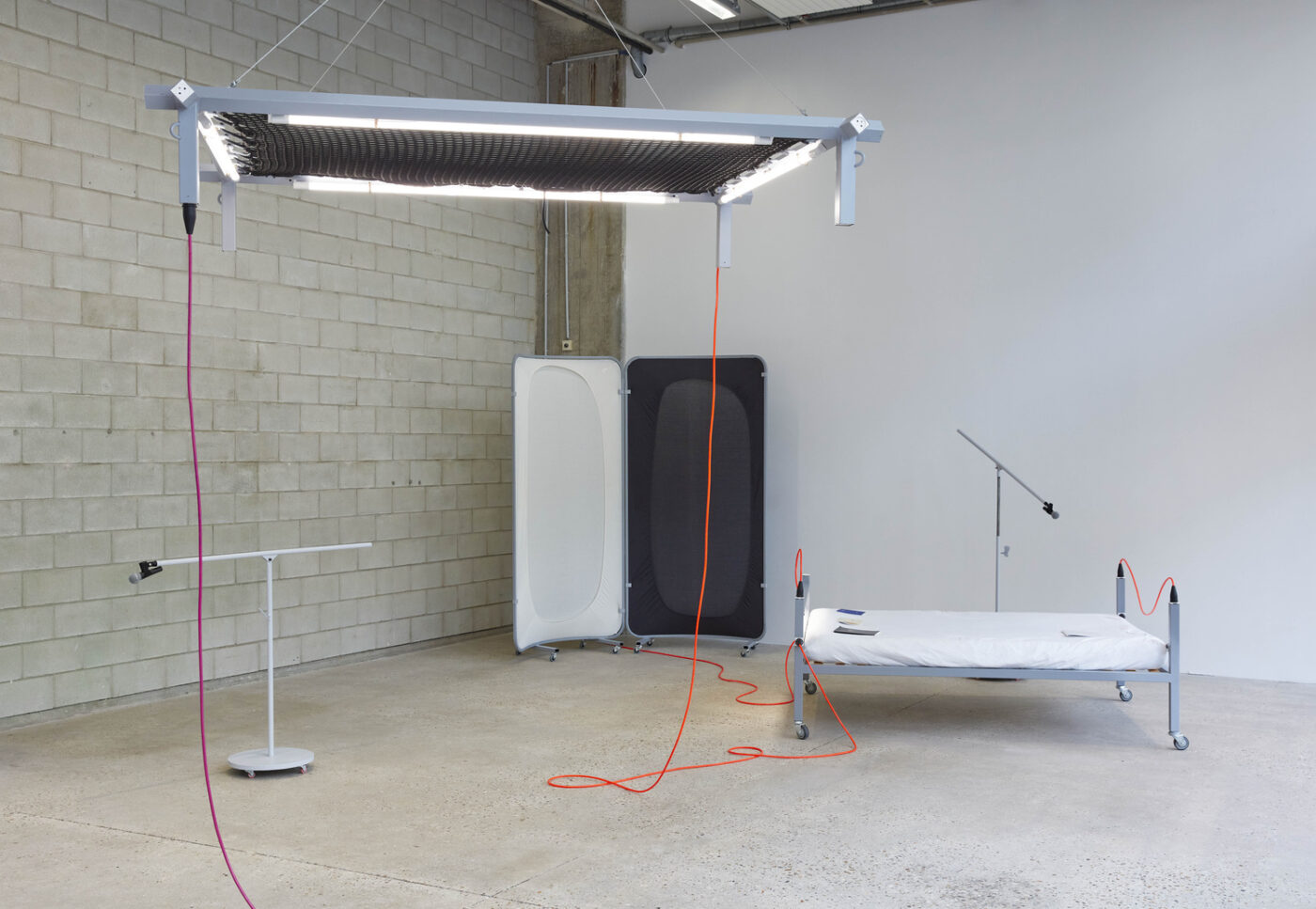
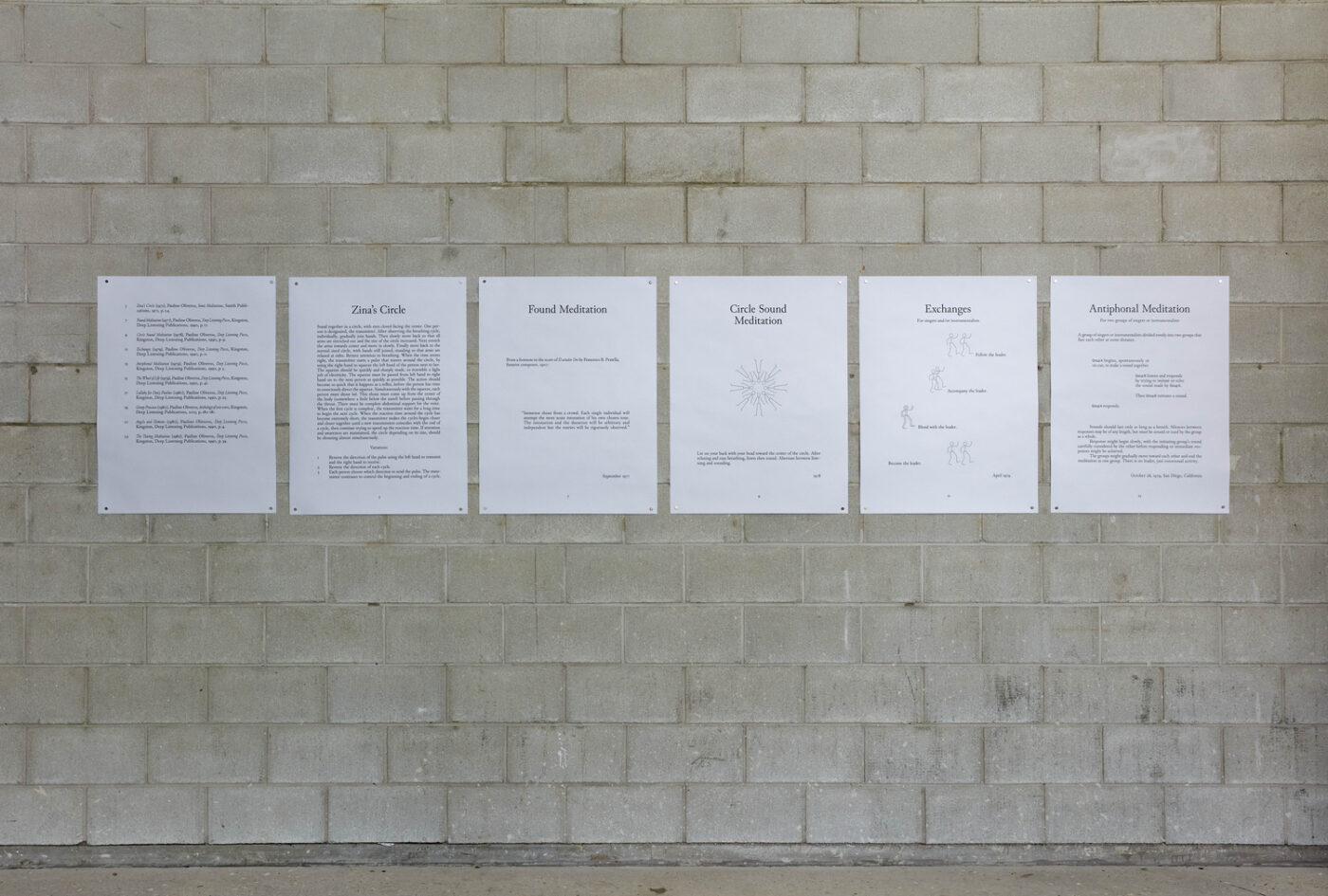
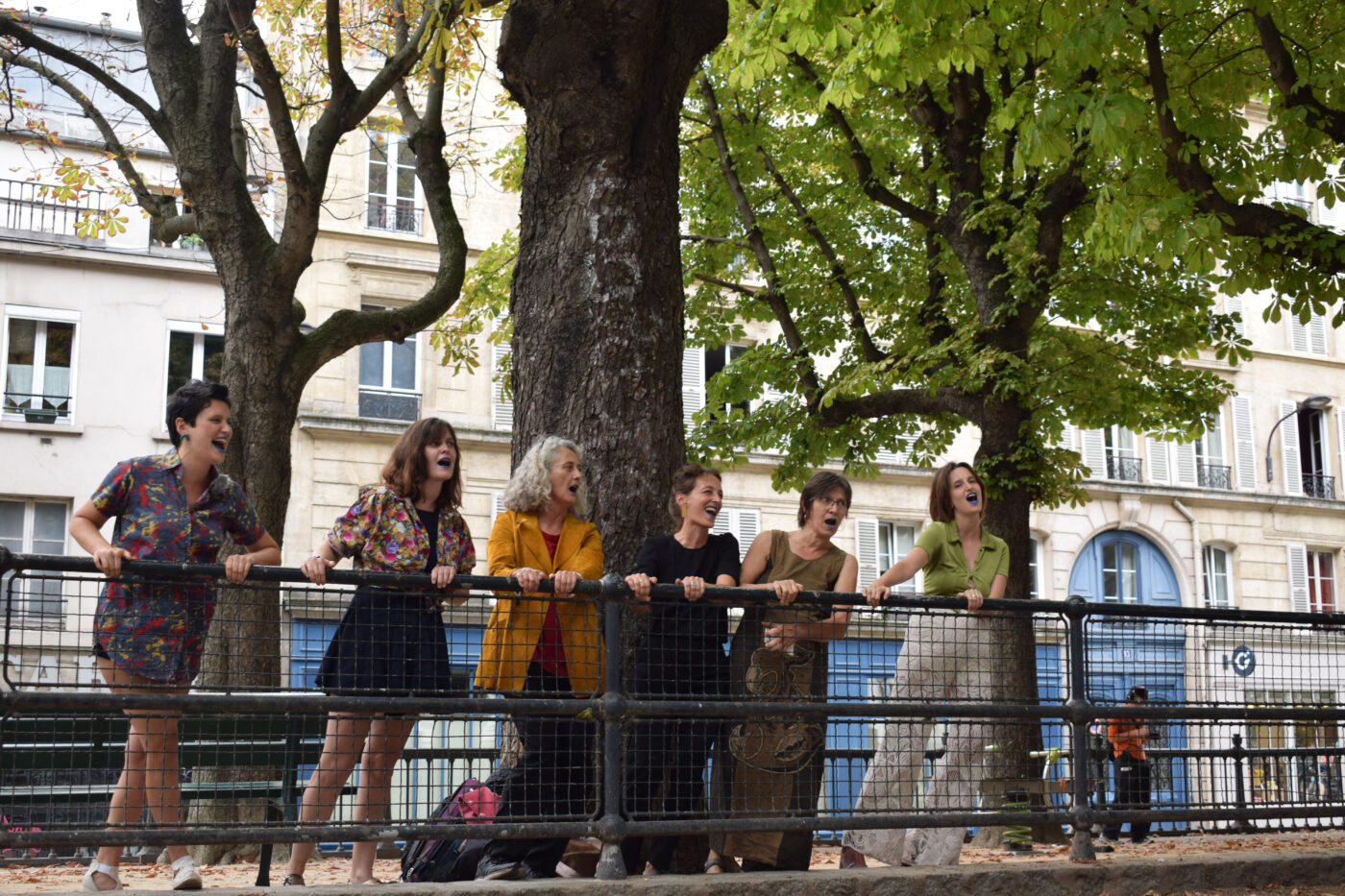
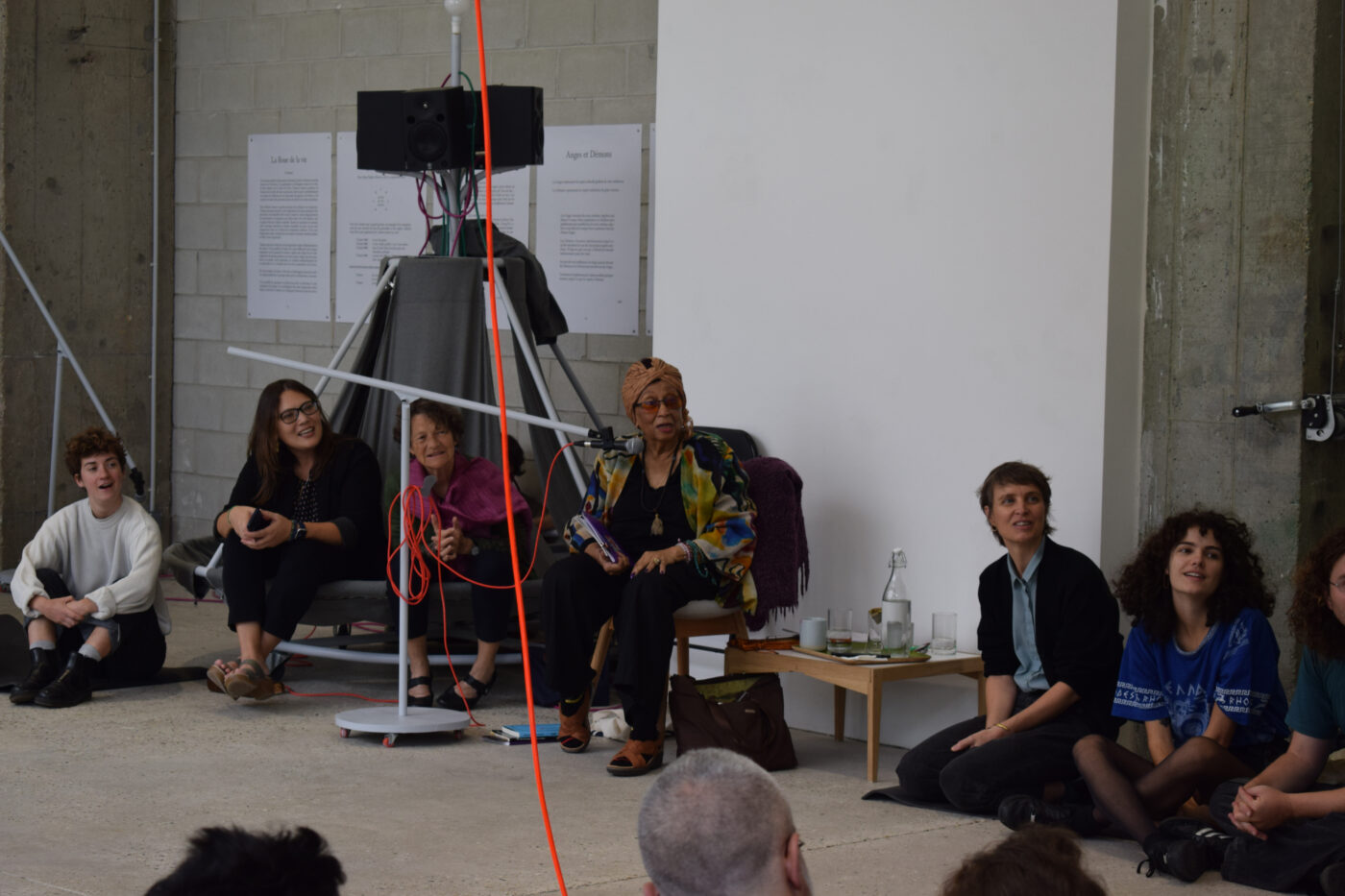
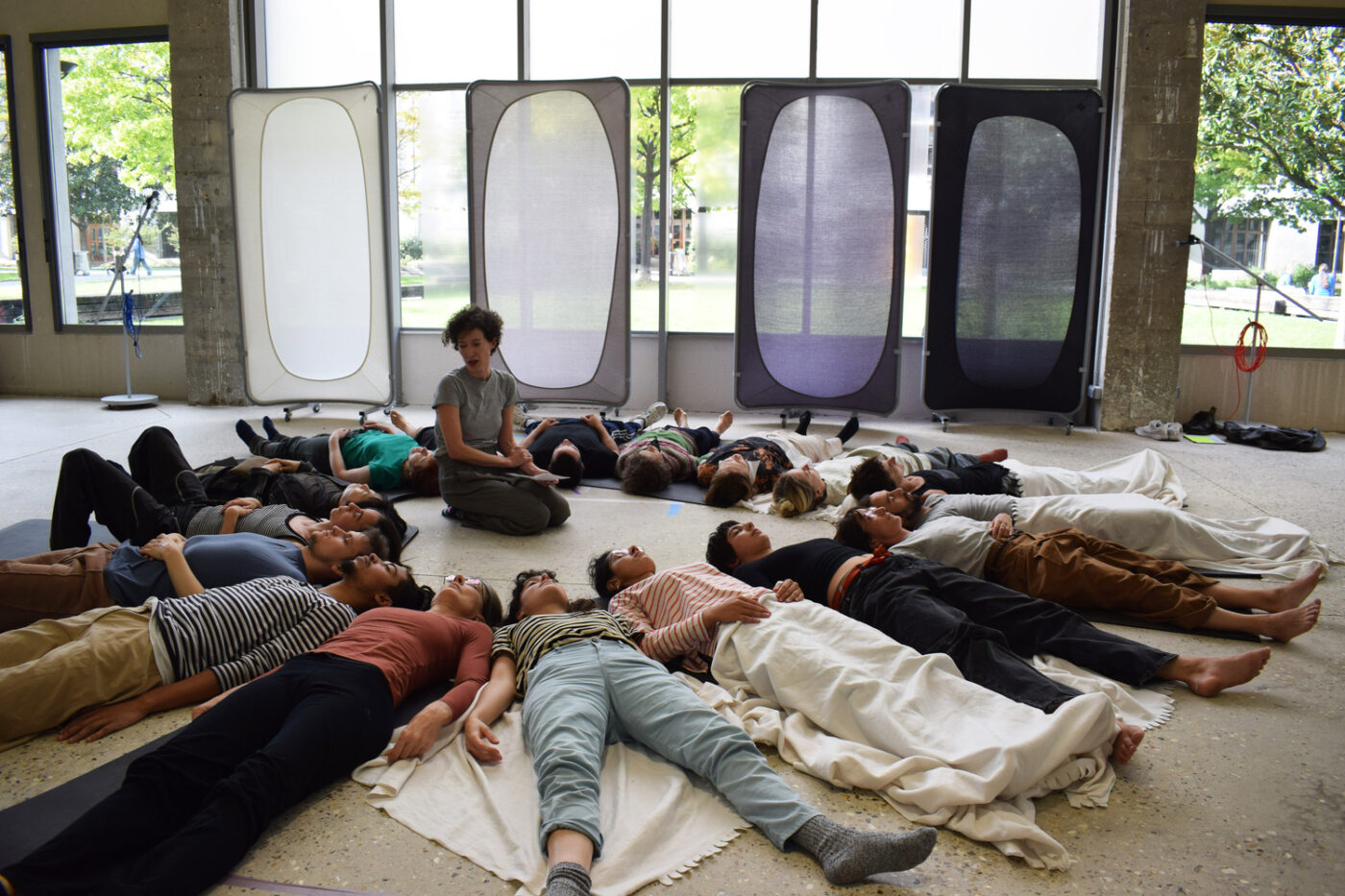
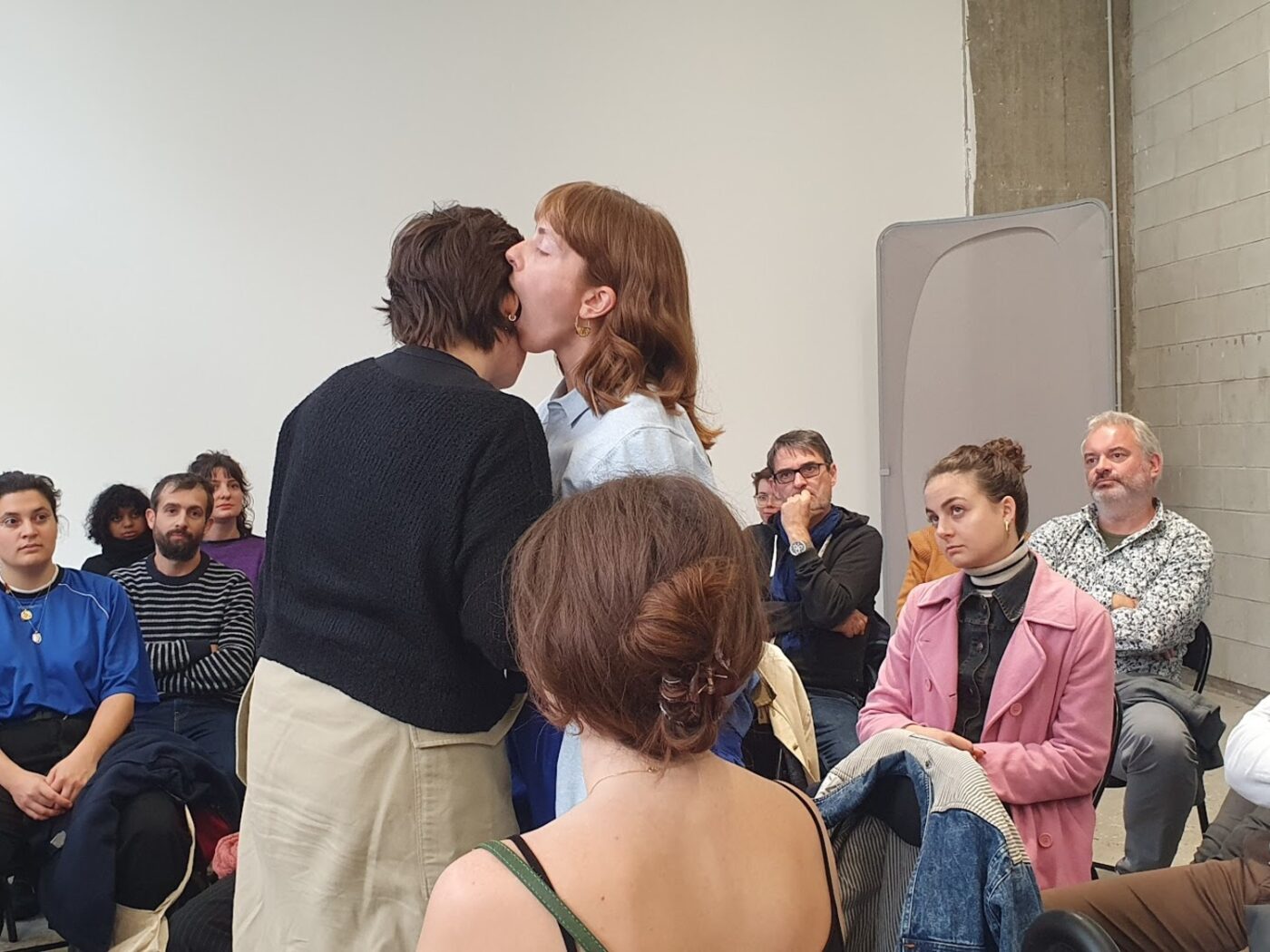
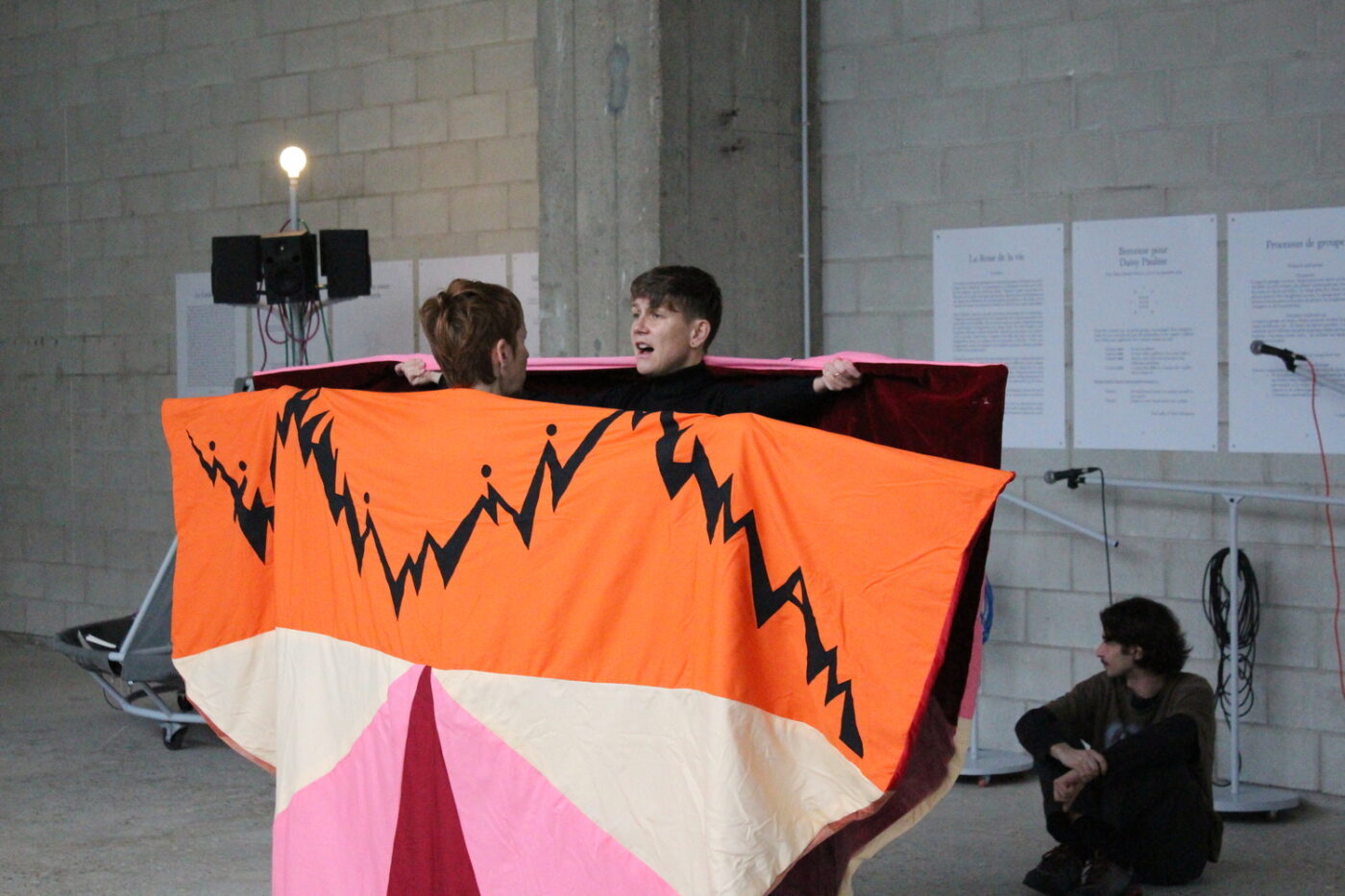
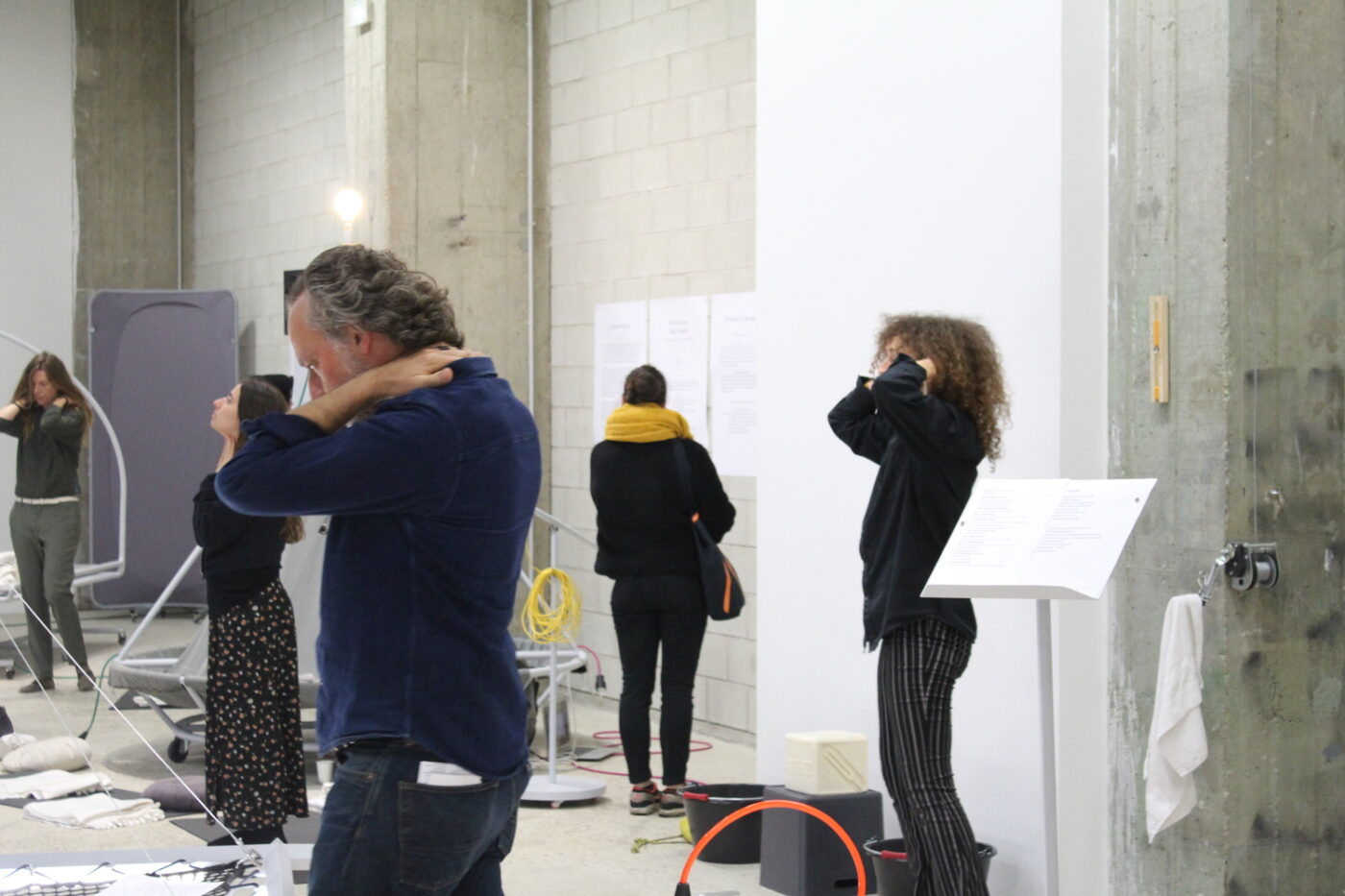
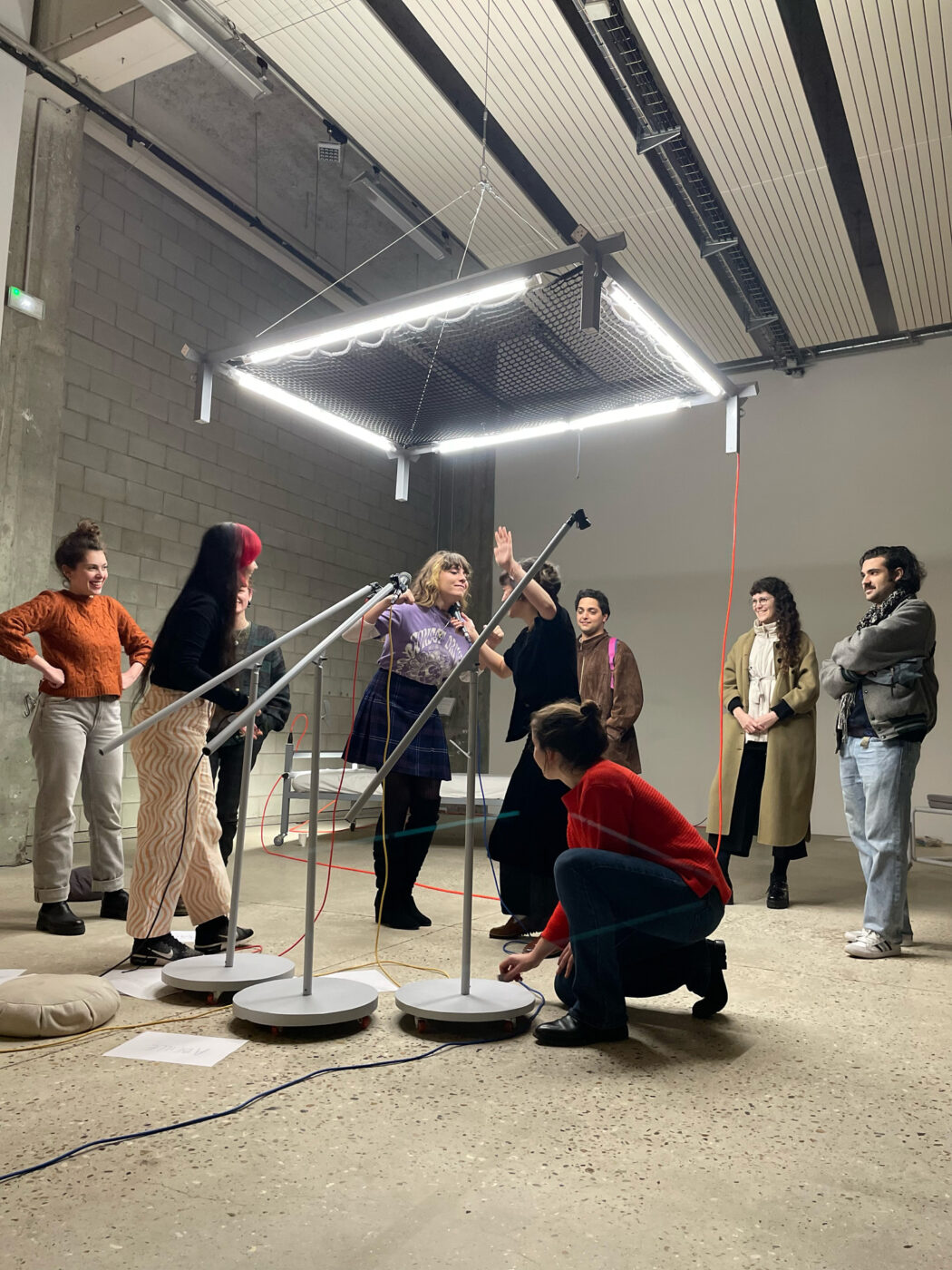
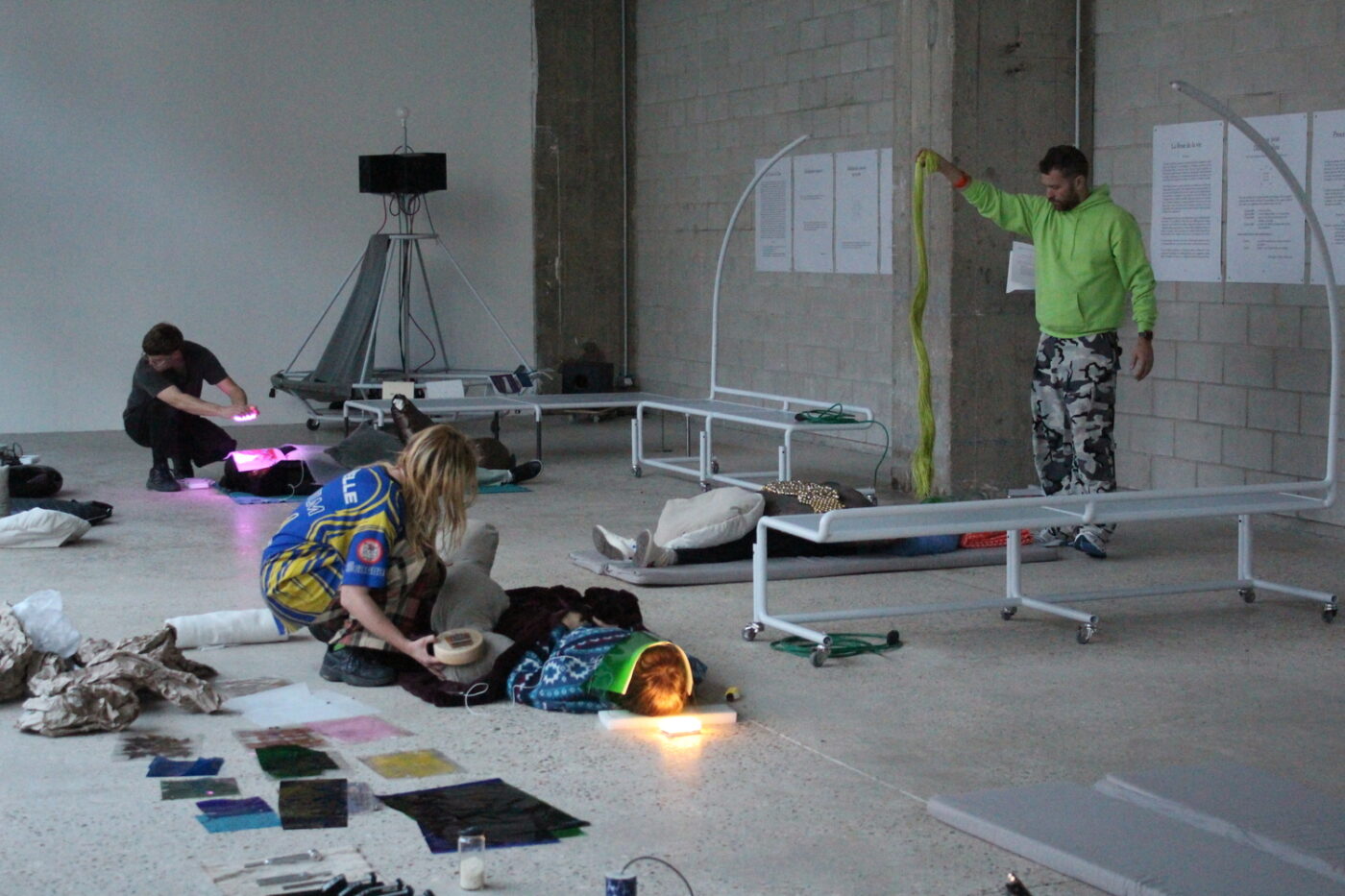
Hors-les-murs / « Earth Ears, écouter la Terre avec Pauline Oliveros » à L’Aperto, Fondation d’entreprise Pernod Ricard Avec Konstantinos Kyriakopoulos et Martha Salimbeni
Exposition à la Fondation d'entreprise Pernod Ricard
22 novembre 2023 — 17 février 2024
22 novembre 2023 — 17 février 2024
En écho à l’exposition « Un·Tuning Together : pratiquer l’écoute avec Pauline Oliveros » à Bétonsalon, ce projet propose d’explorer les liens entre Deep Listening et écologie à travers une sélection d’archives et d’œuvres d’Oliveros. Selon elle, « Le Deep Listening consiste à écouter tout ce qu’il est possible d’entendre de toutes les manières possibles… Cette écoute intense inclut les sons de la vie quotidienne, ceux de la nature, de nos propres pensées ainsi que les sons musicaux. Le Deep Listening est un état de conscience augmenté qui connecte l’auditeur·ice à tout ce qui existe. »¹ Cette définition souligne d’emblée la place du vivant dans l’œuvre d’Oliveros — « Mon enfance dans une région rurale du Texas m’a sensibilisée aux sons des éléments naturels et de la vie animale », a-t-elle expliqué à plusieurs reprises — mais aussi et surtout sa conception de l’écoute comme une pratique capable de nous faire prendre conscience de ce qui nous relie au monde. Comme l’écrit la musicologue Denise Von Glahn, « Oliveros adopte une vision holistique du monde et conçoit donc la nature différemment de nombreux·ses écrivain·es, penseur·ses et compositeur·rices qui l’ont précédée. Loin d’envisager la nature comme quelque chose de discret et d’extérieur à elle-même, quelque chose de séparé de l’humanité, Oliveros se considère comme faisant partie d’un continuum vivant. »²
Organisée en cinq chapitres, cette exposition s’intéresse aux différentes manières dont, dans l’œuvre d’Oliveros, la pratique de l’écoute peut nous faire ressentir cette continuité avec le monde vivant. Ici, l’expérience sensible participe d’un projet politique : celui de rompre avec une vision anthropocentrée de la nature en éprouvant l’environnement non plus comme un fond bruyant, un décor aux activités humaines, mais comme une entité active à laquelle nous sommes profondément lié·es.
Dans le prolongement de leurs propositions pour l’exposition à Bétonsalon, Konstantinos Kyriakopoulos et Martha Salimbeni composent ensemble un espace de consultation qui s’inspire des dispositifs des bibliothèques faits de structures porteuses souples. Éclairés d’une lumière douce associée à la somnolence, ces souvenirs sont à réactiver par la lecture, l’écoute, l’interprétation et la rêverie.
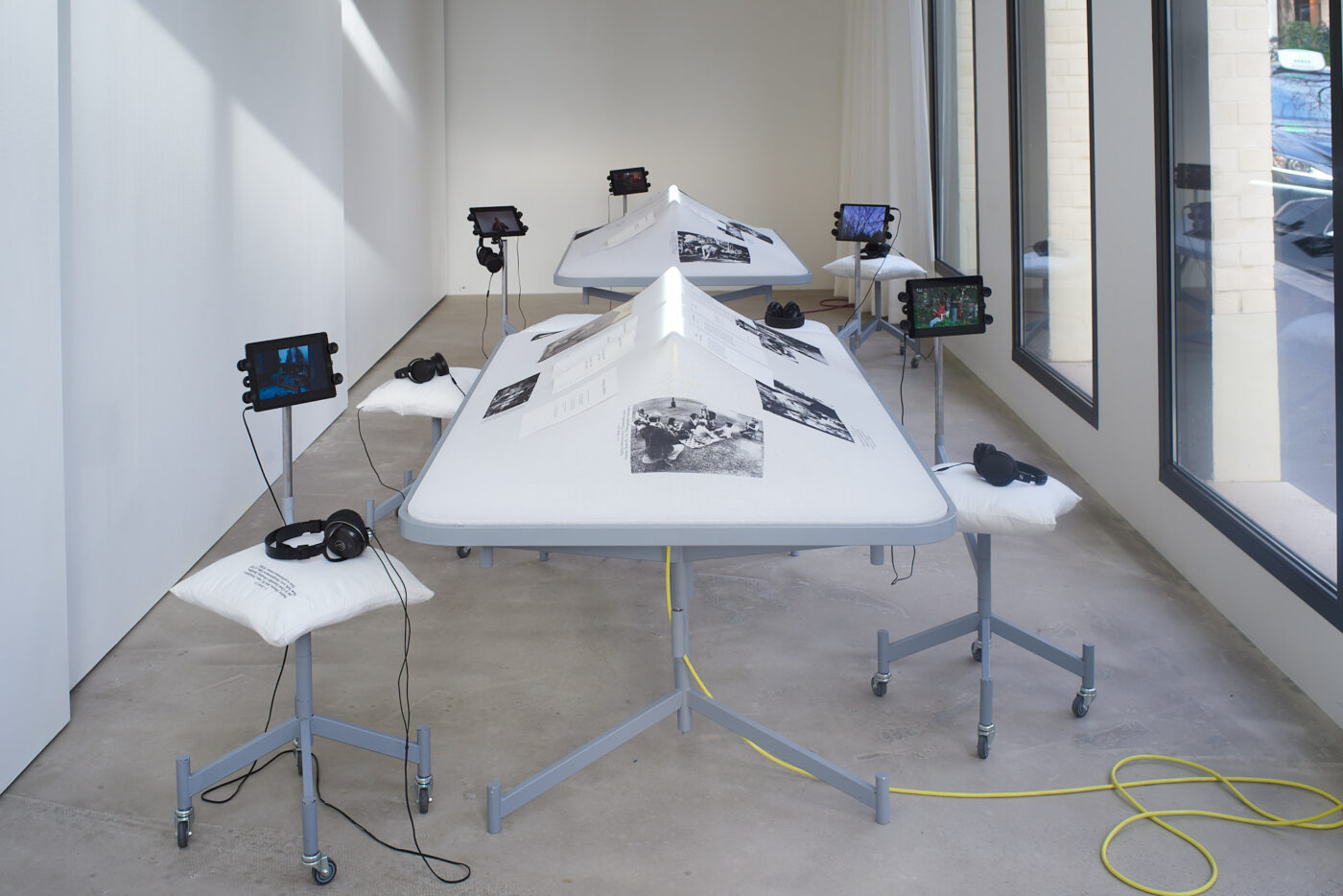
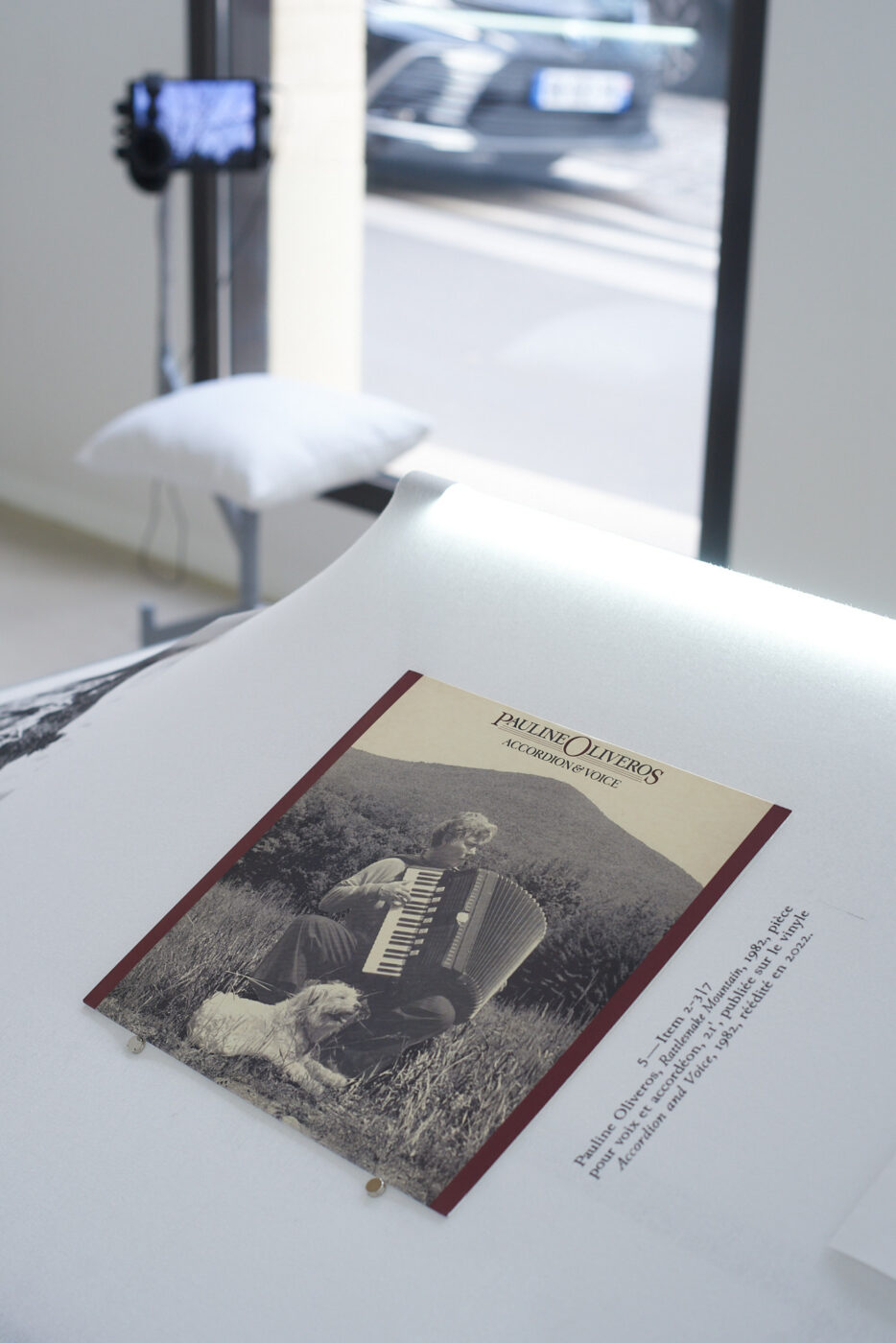
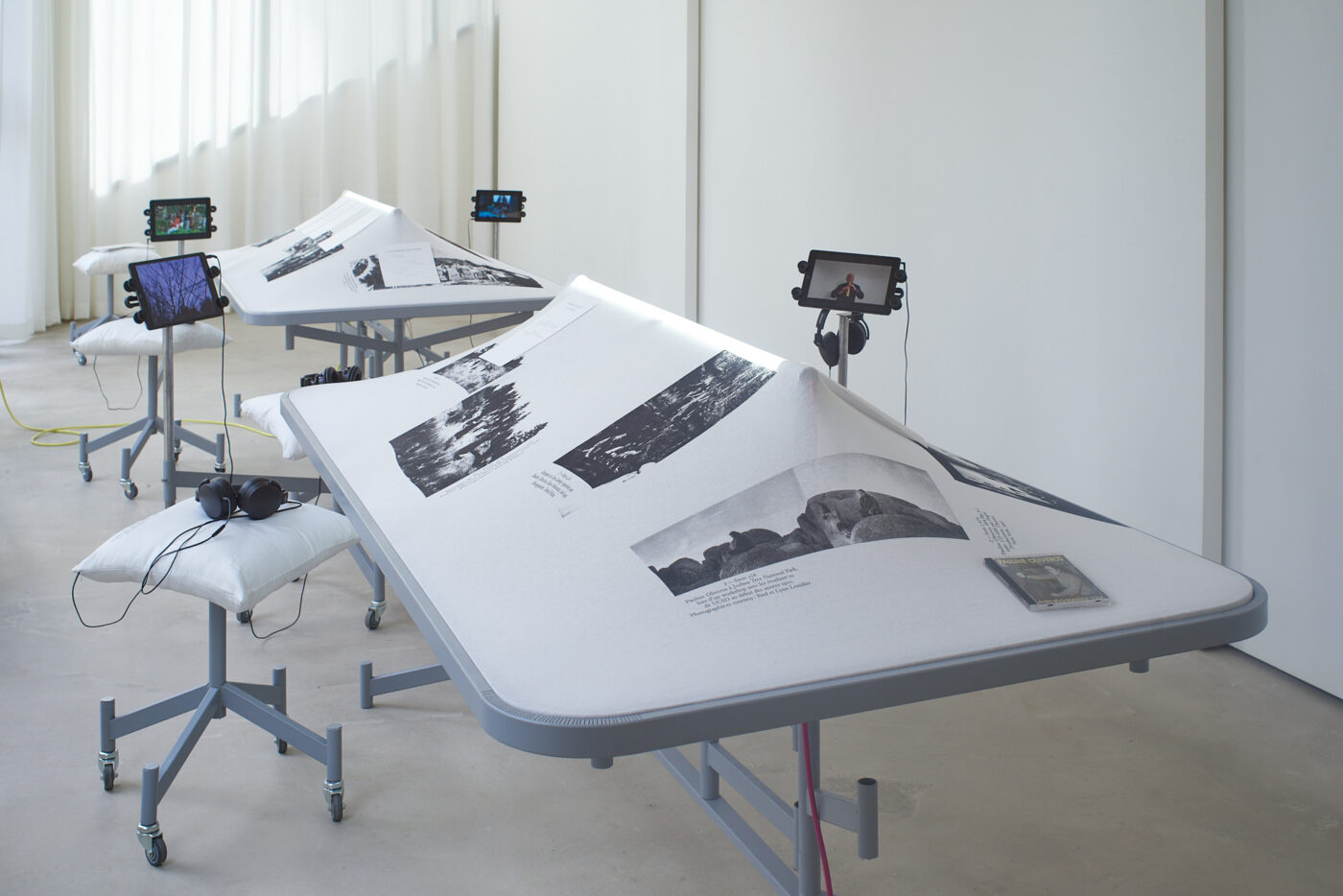
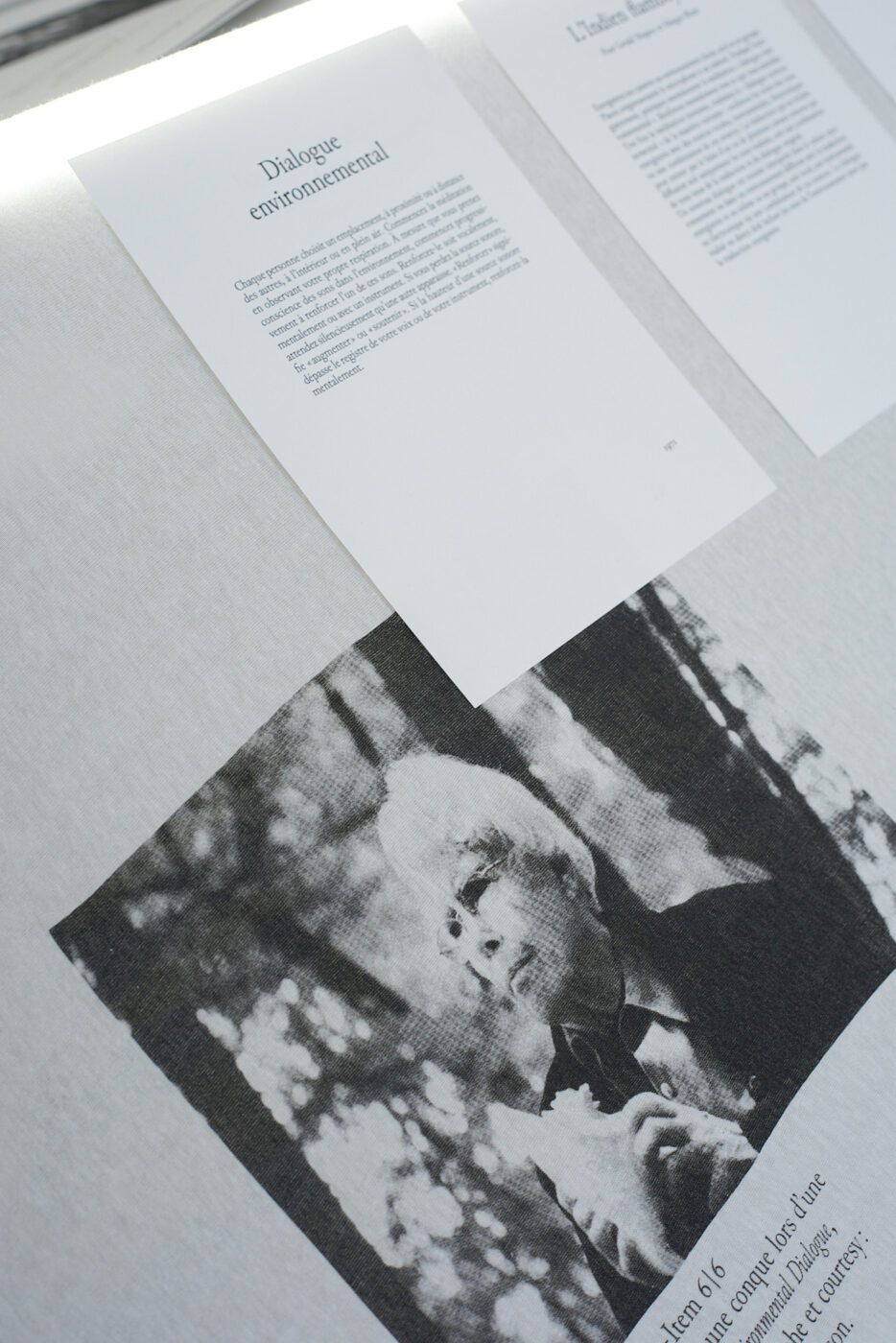
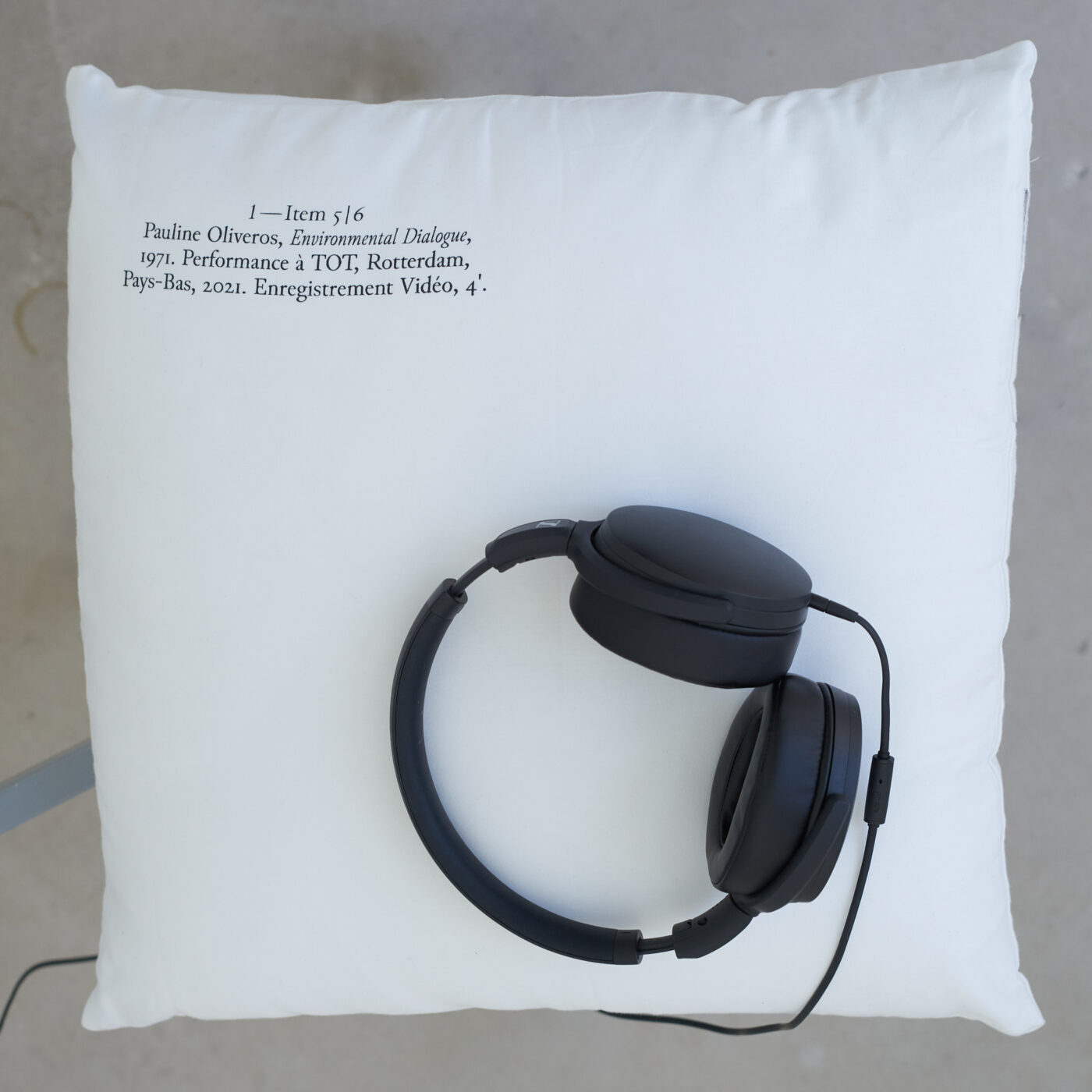
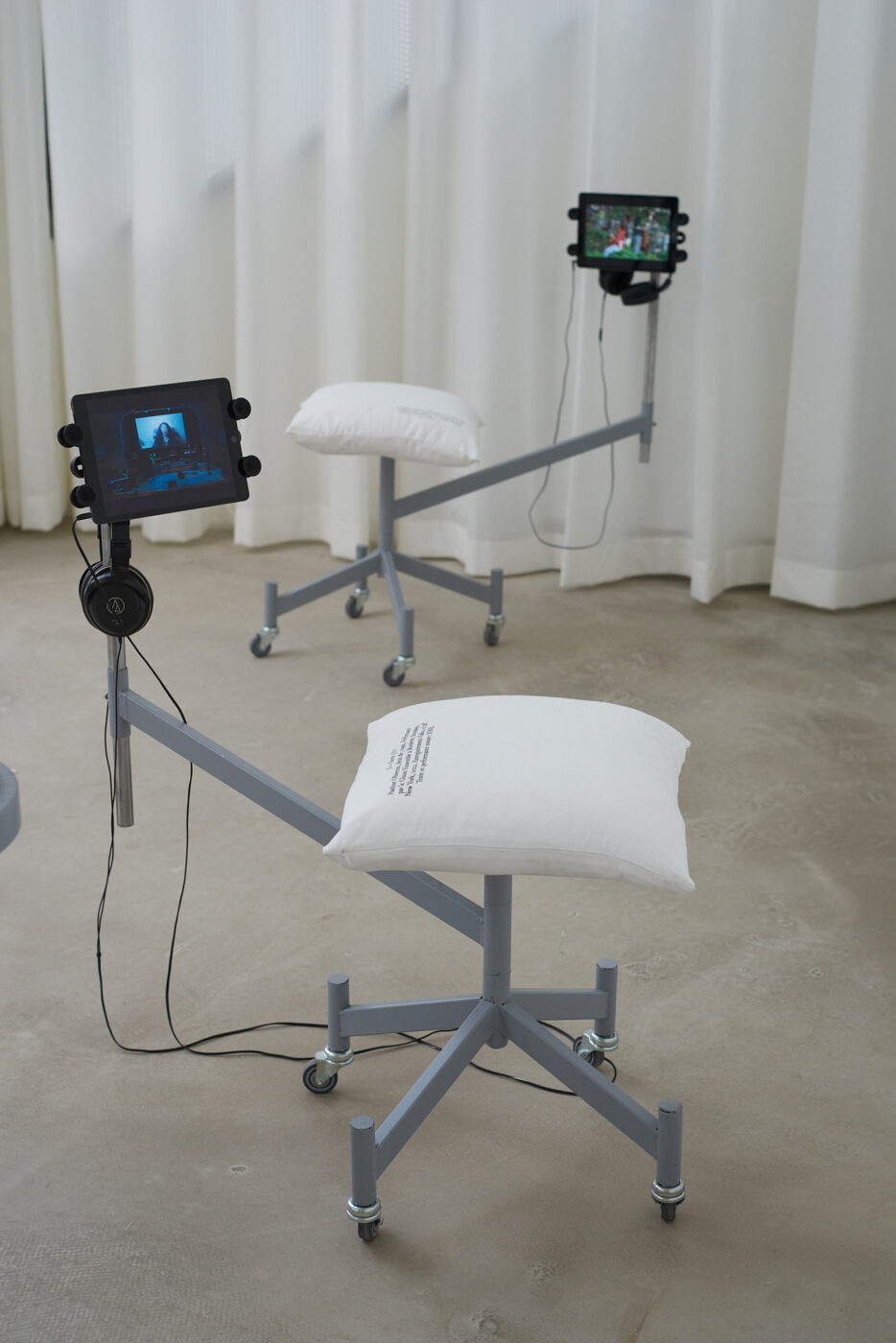
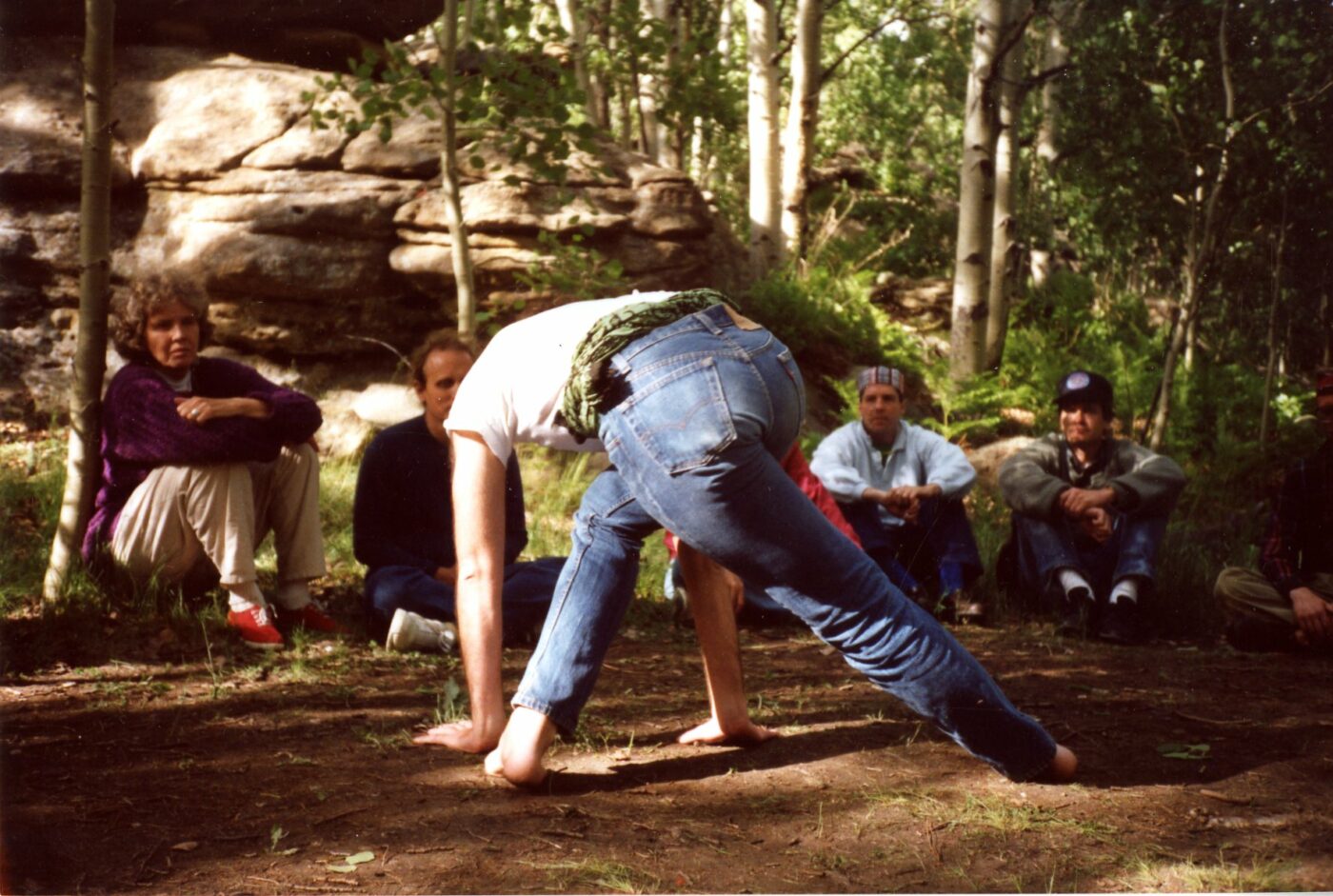
En cours